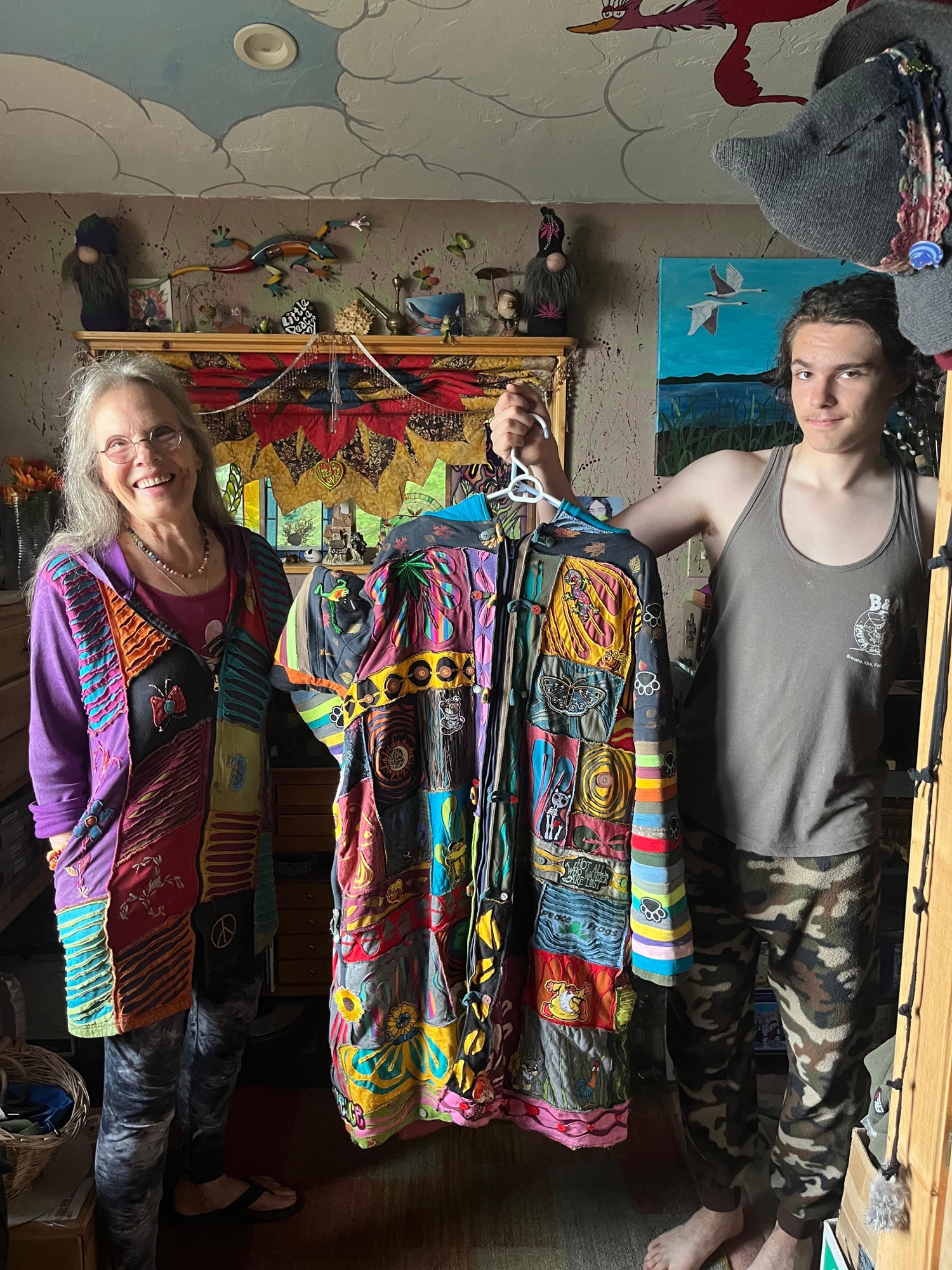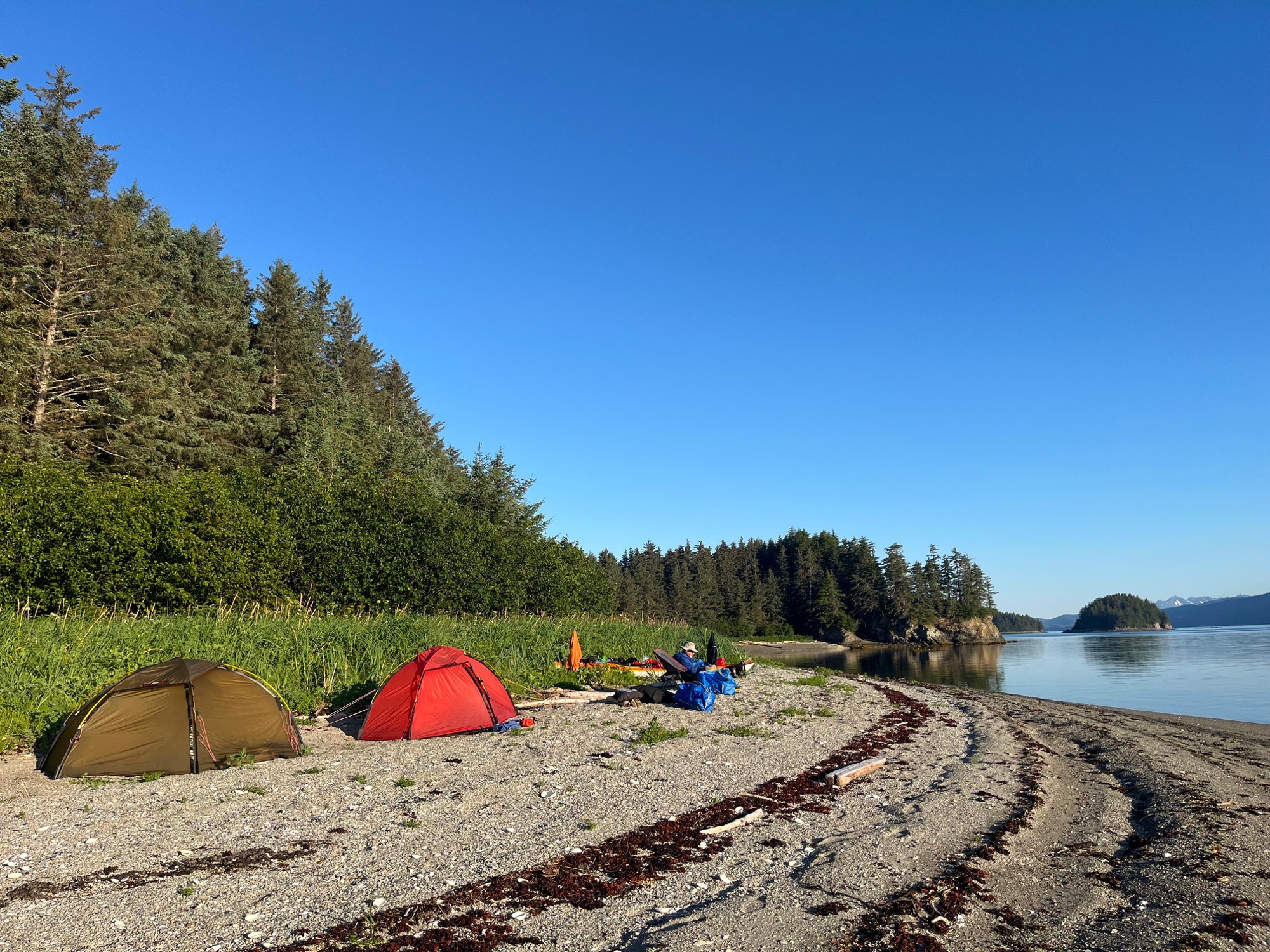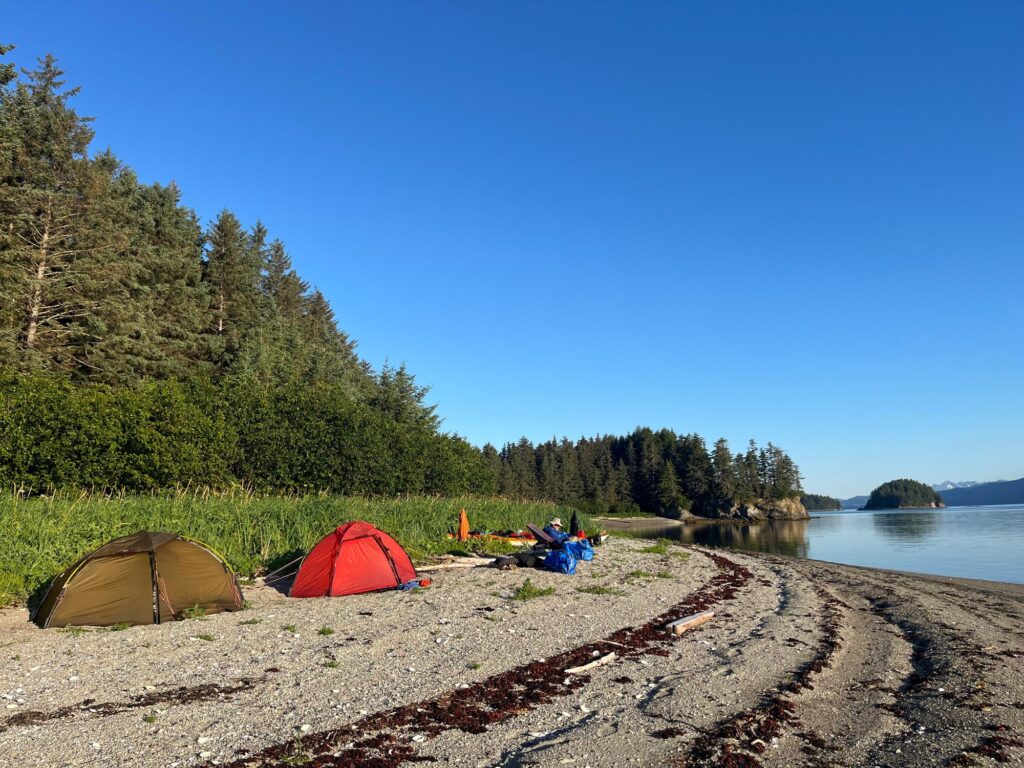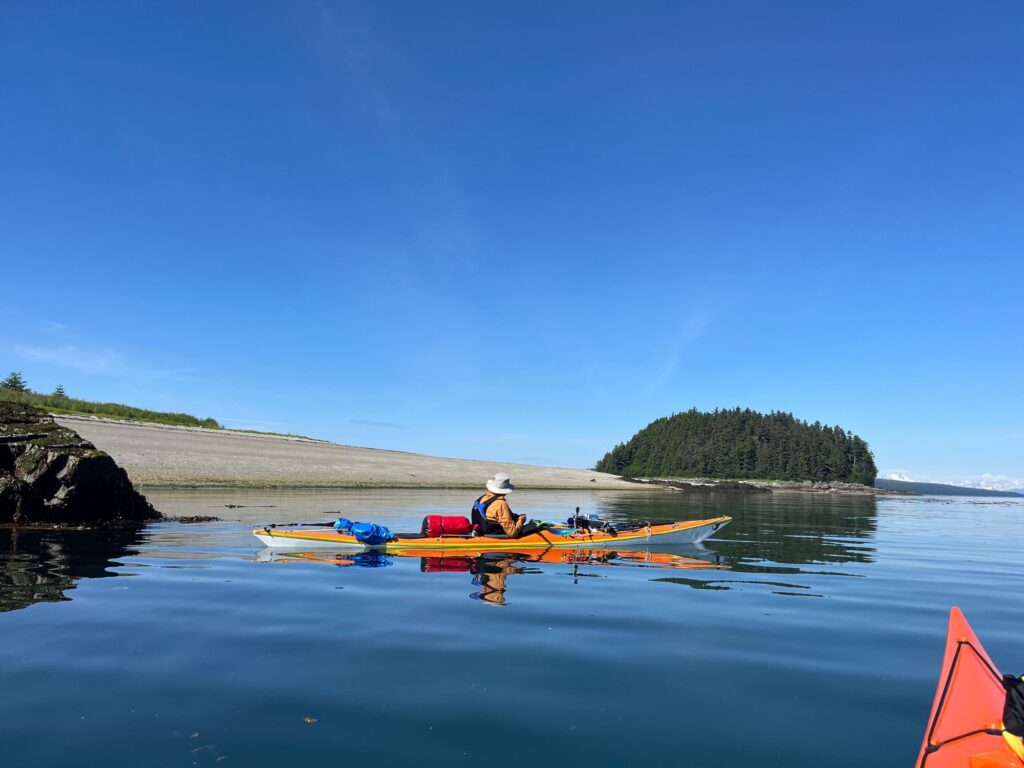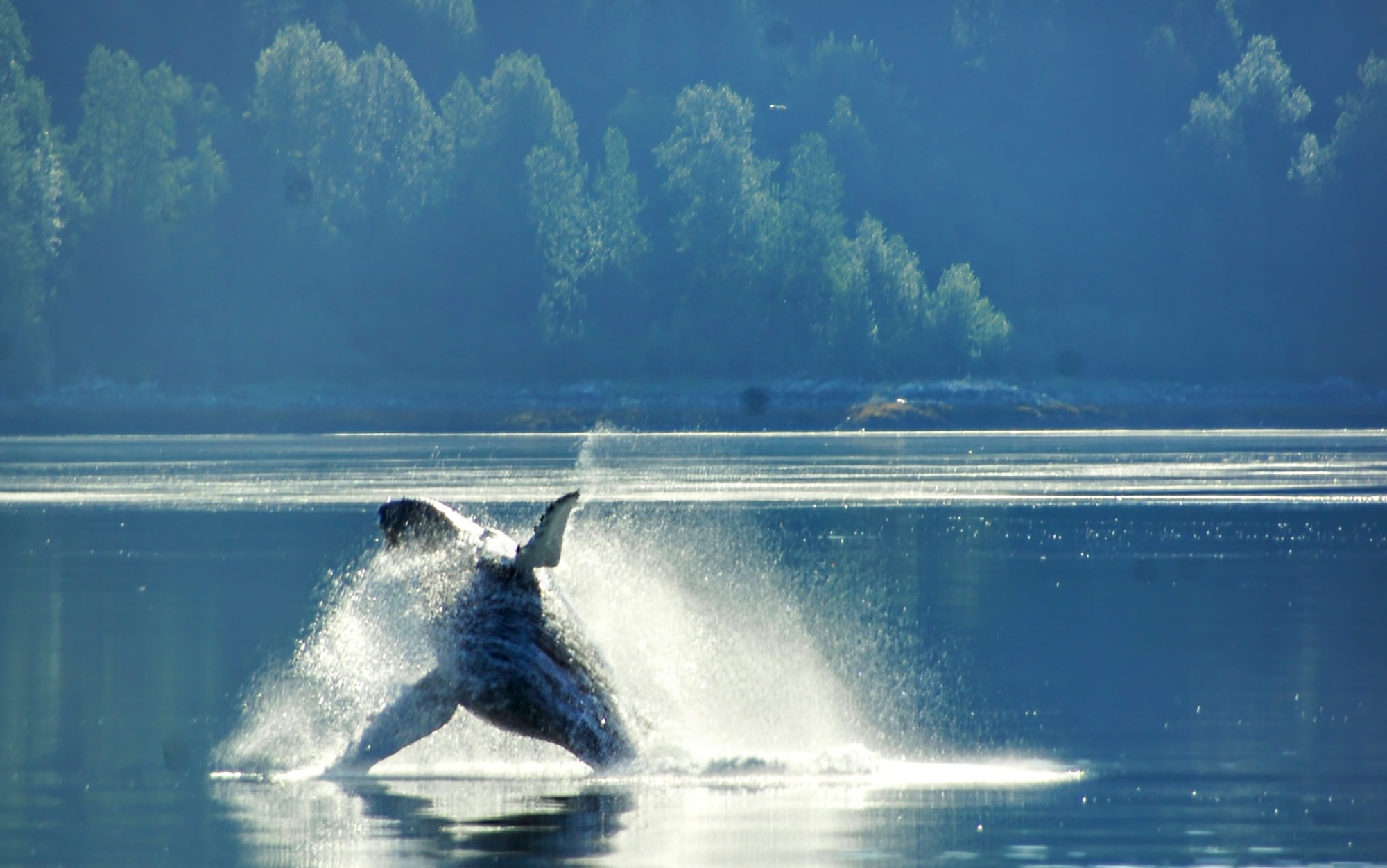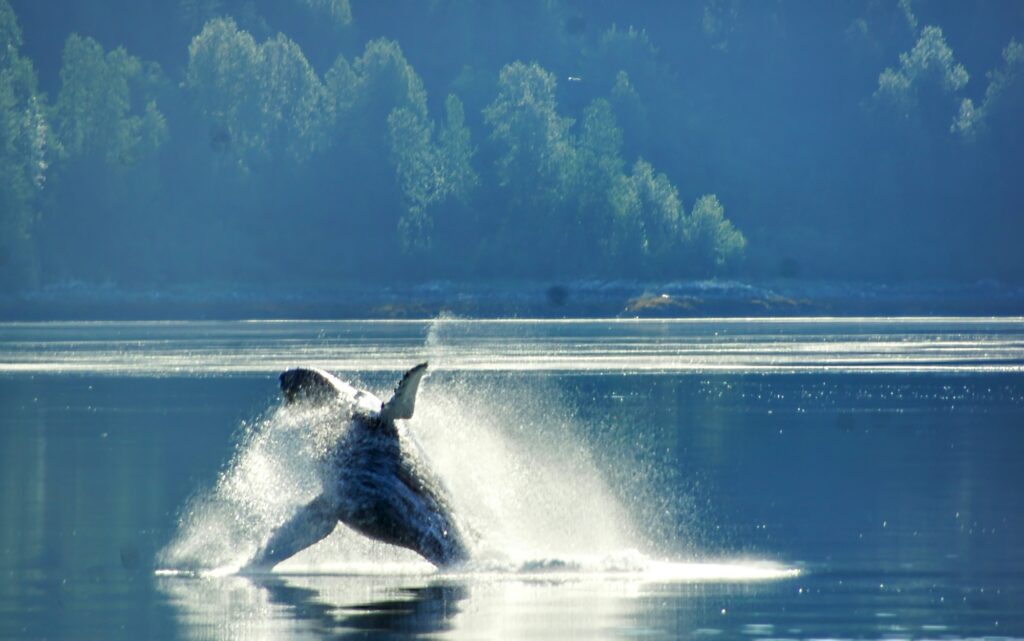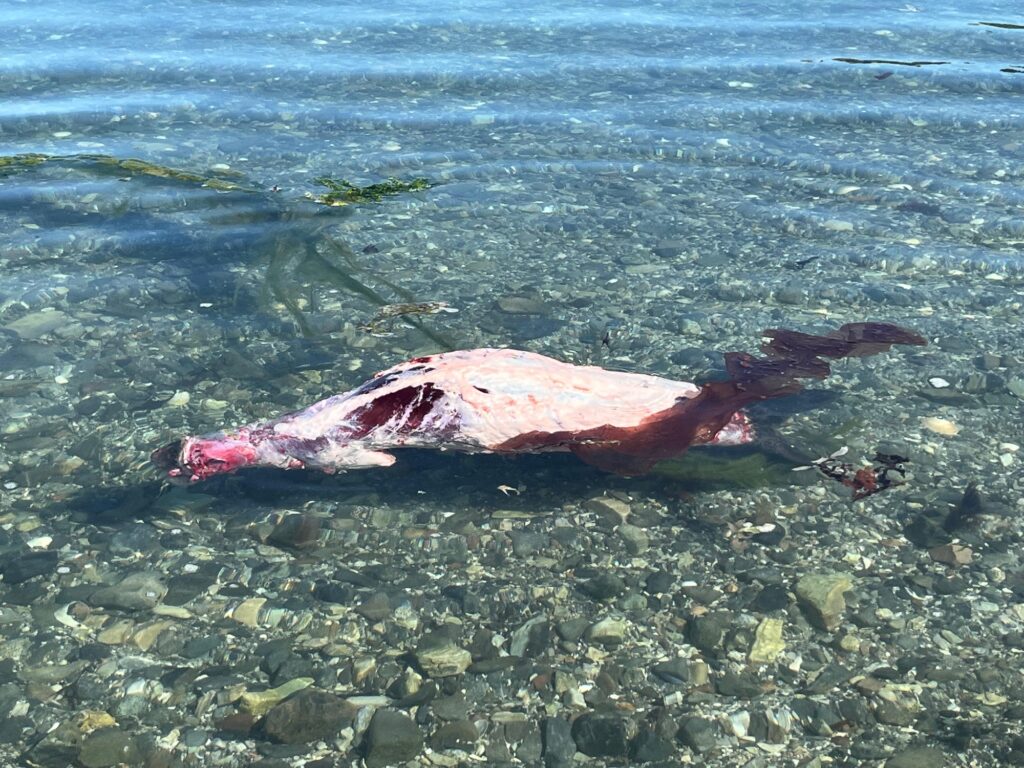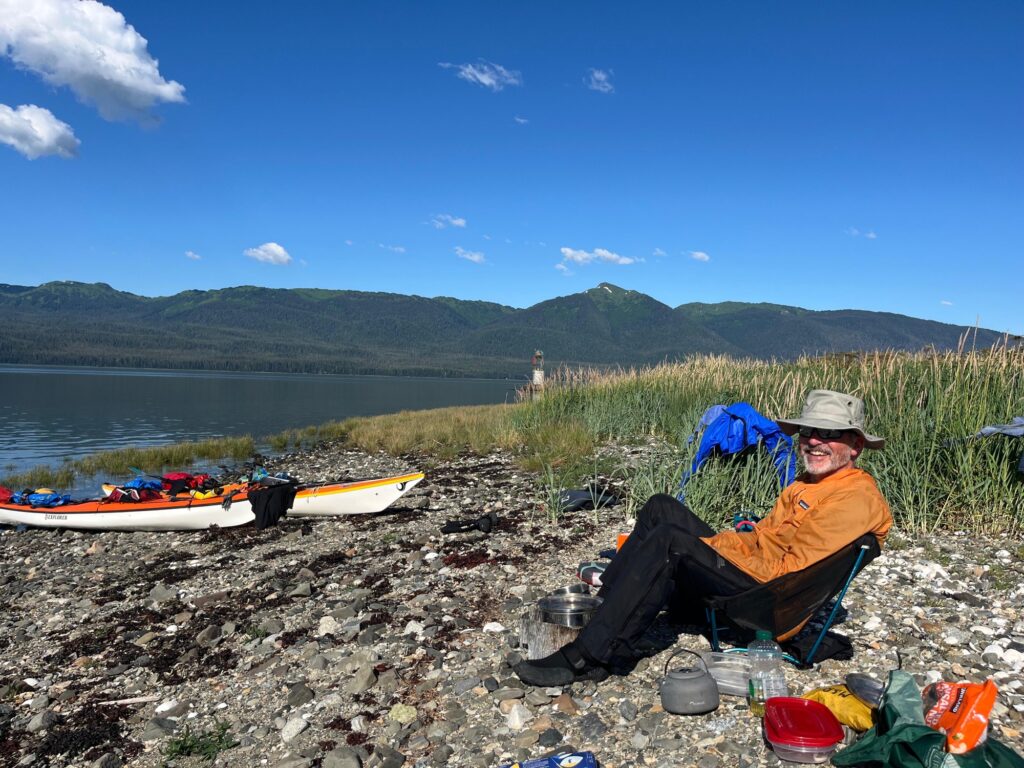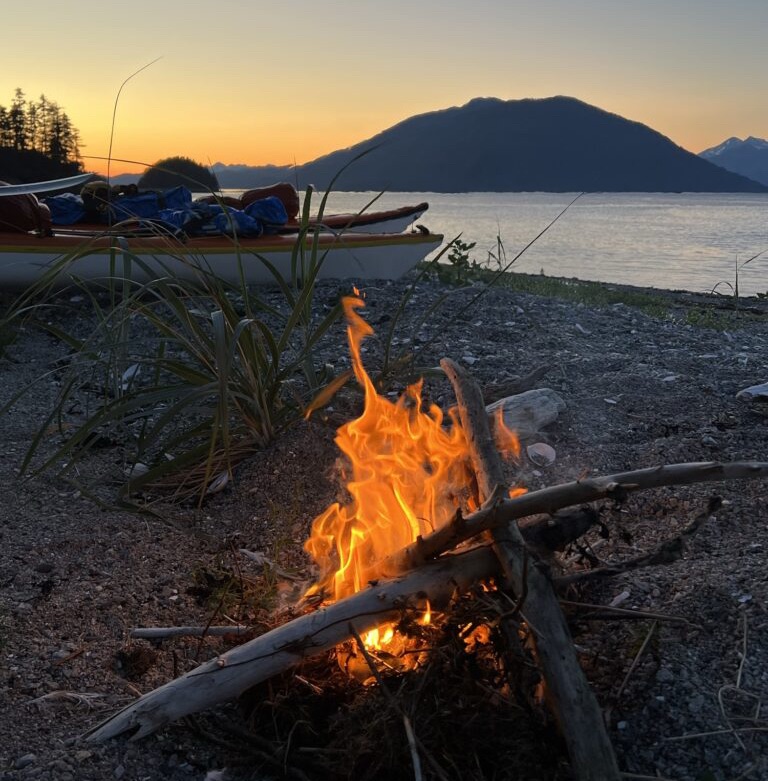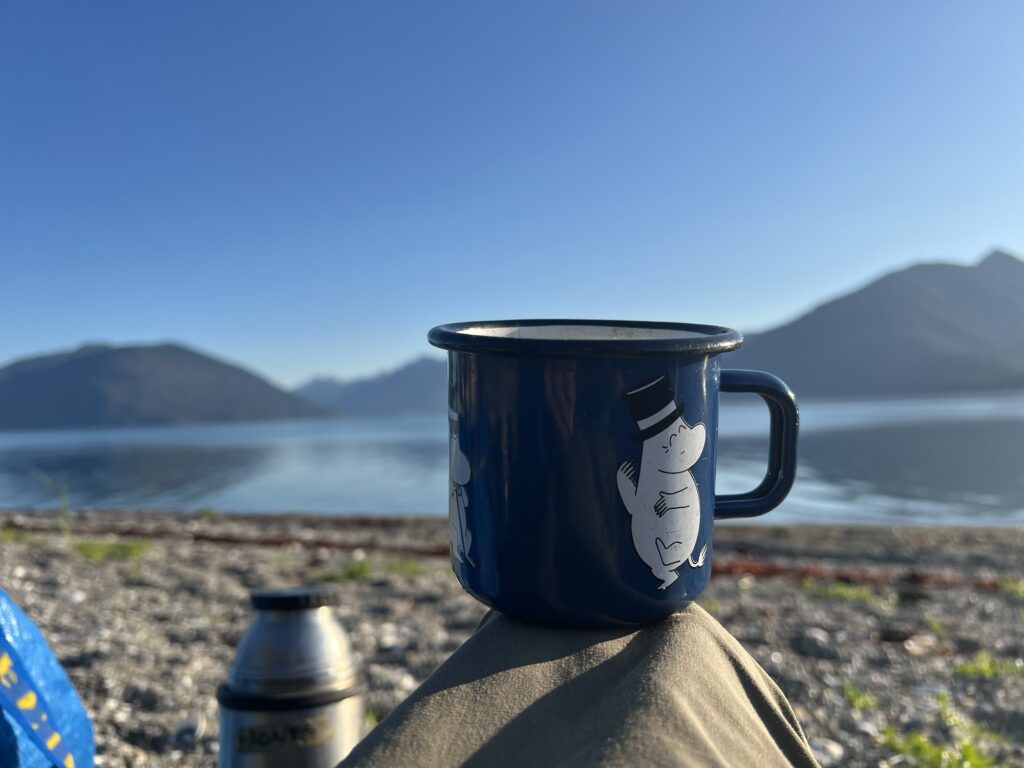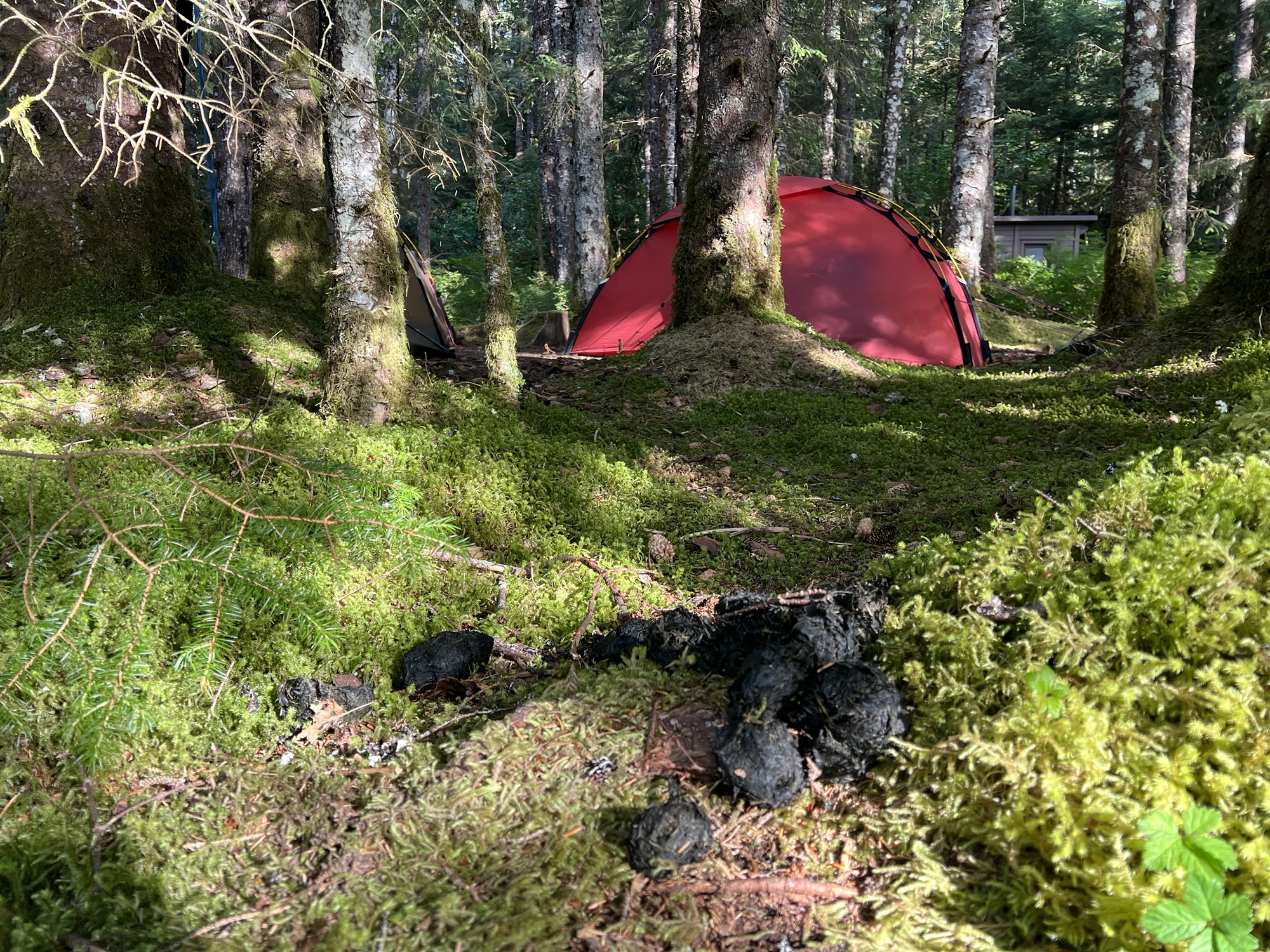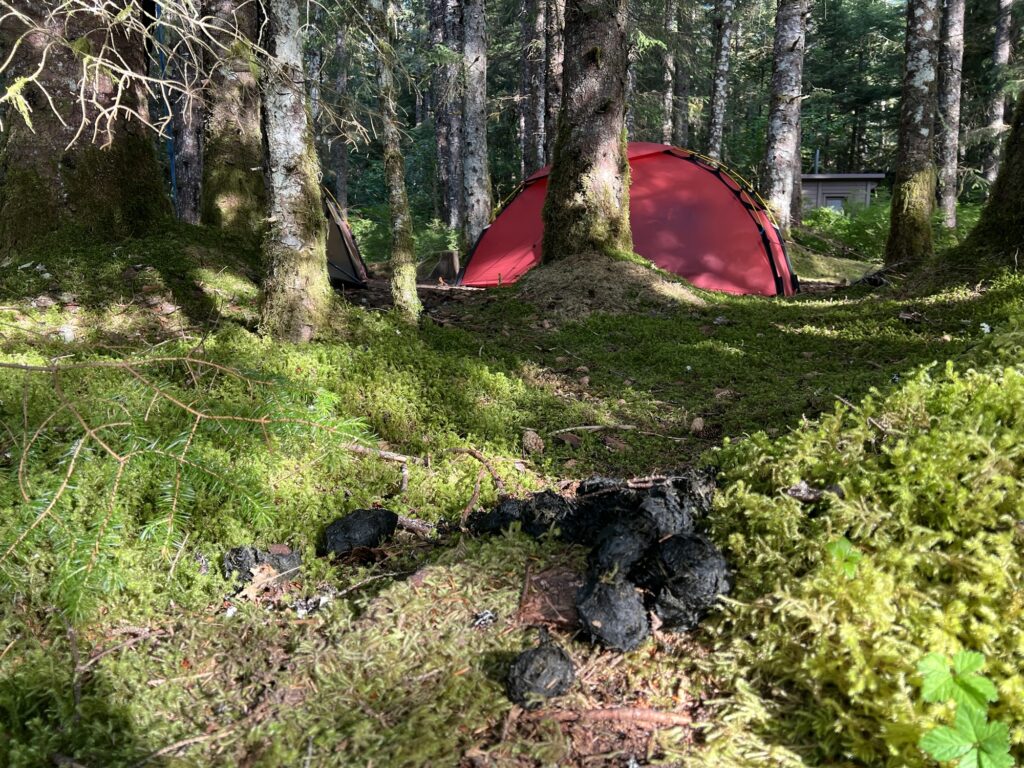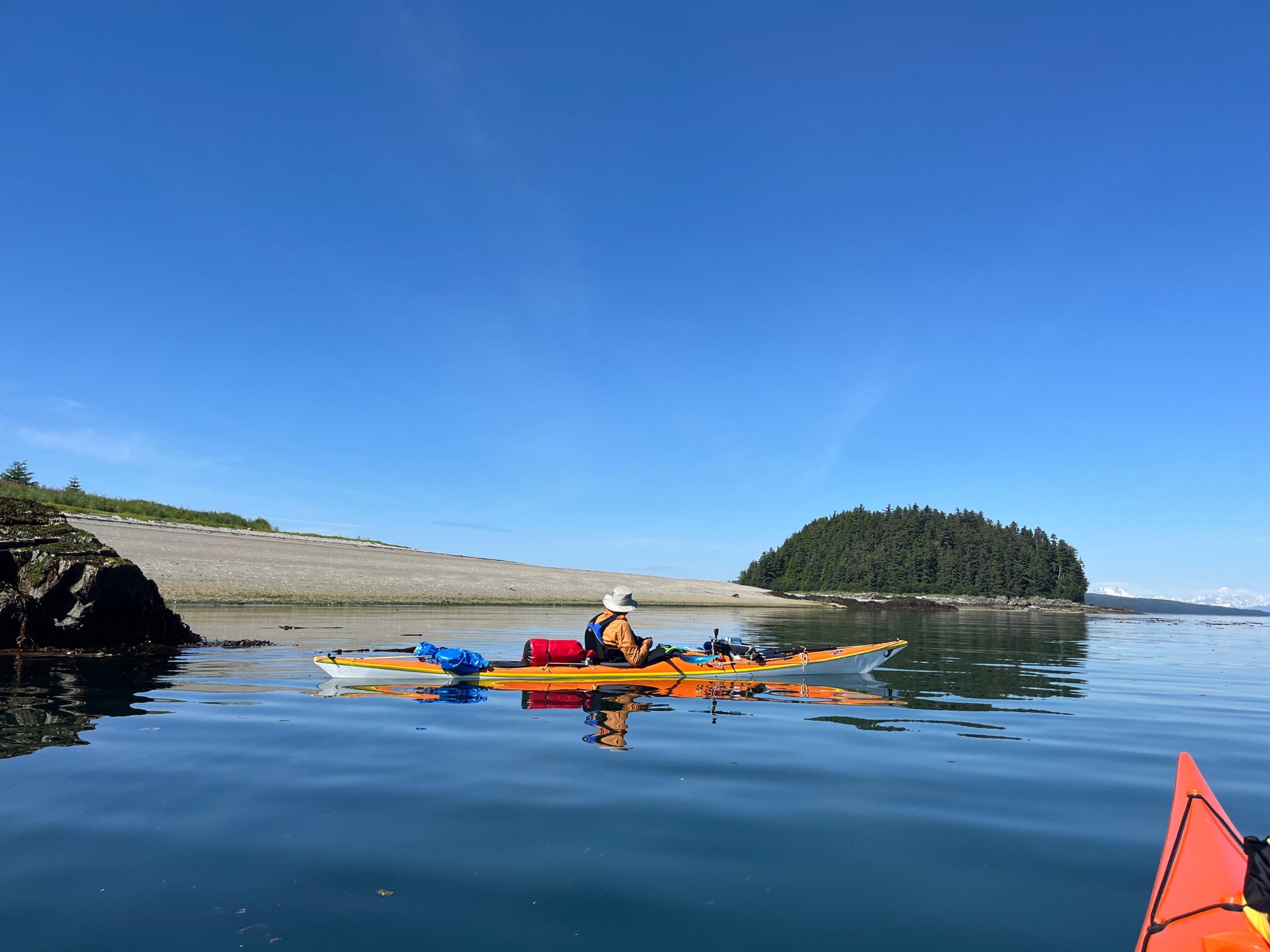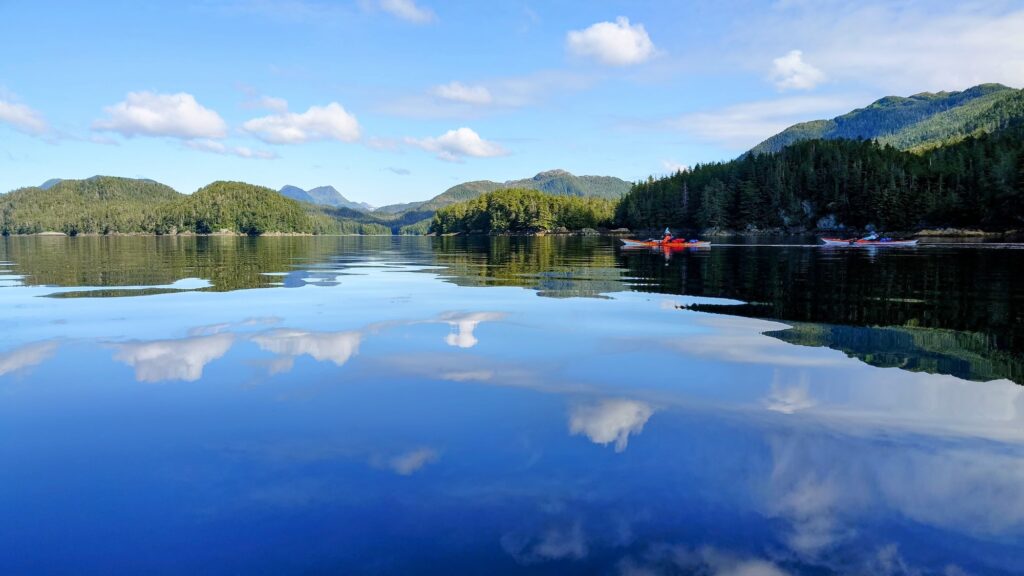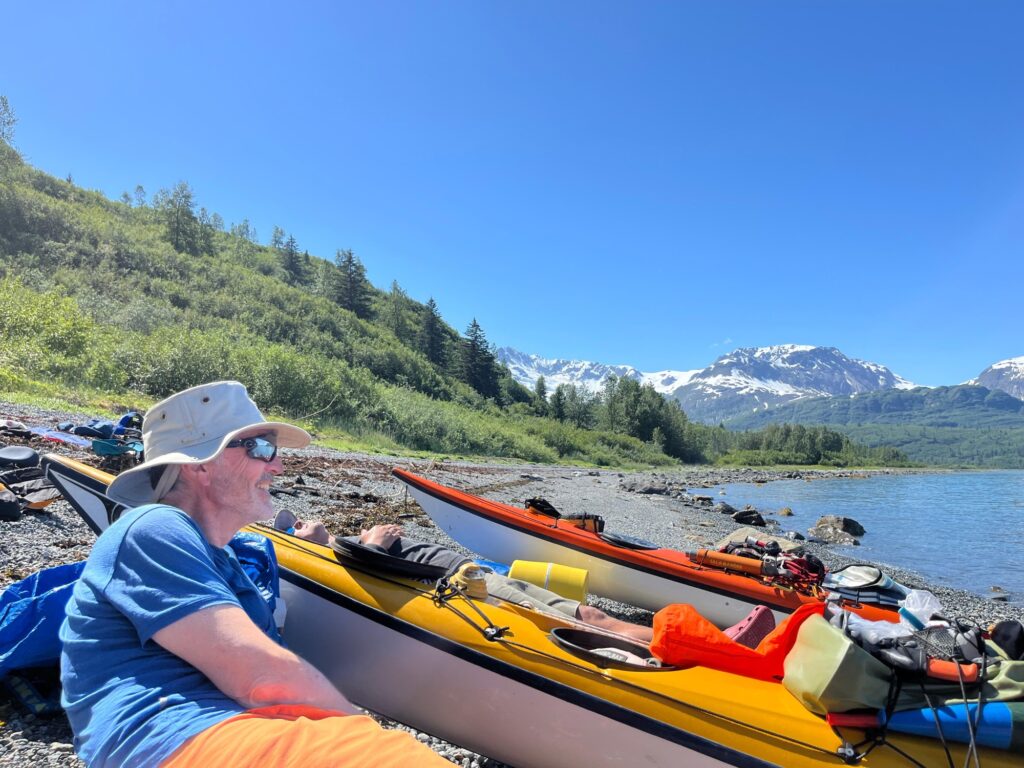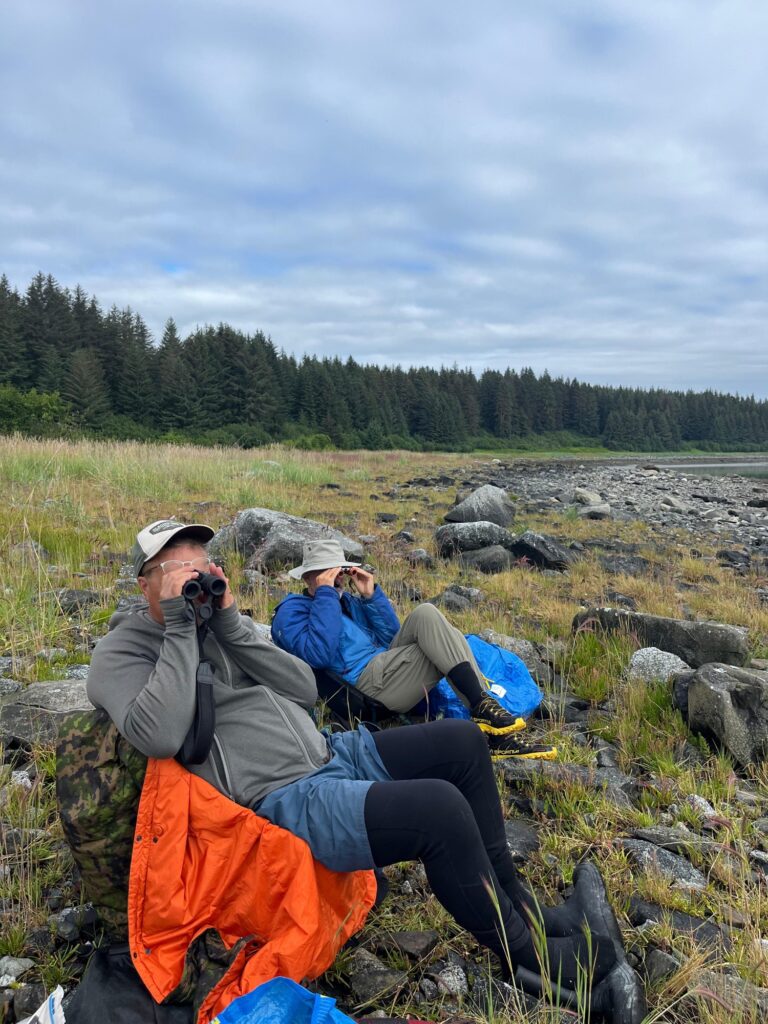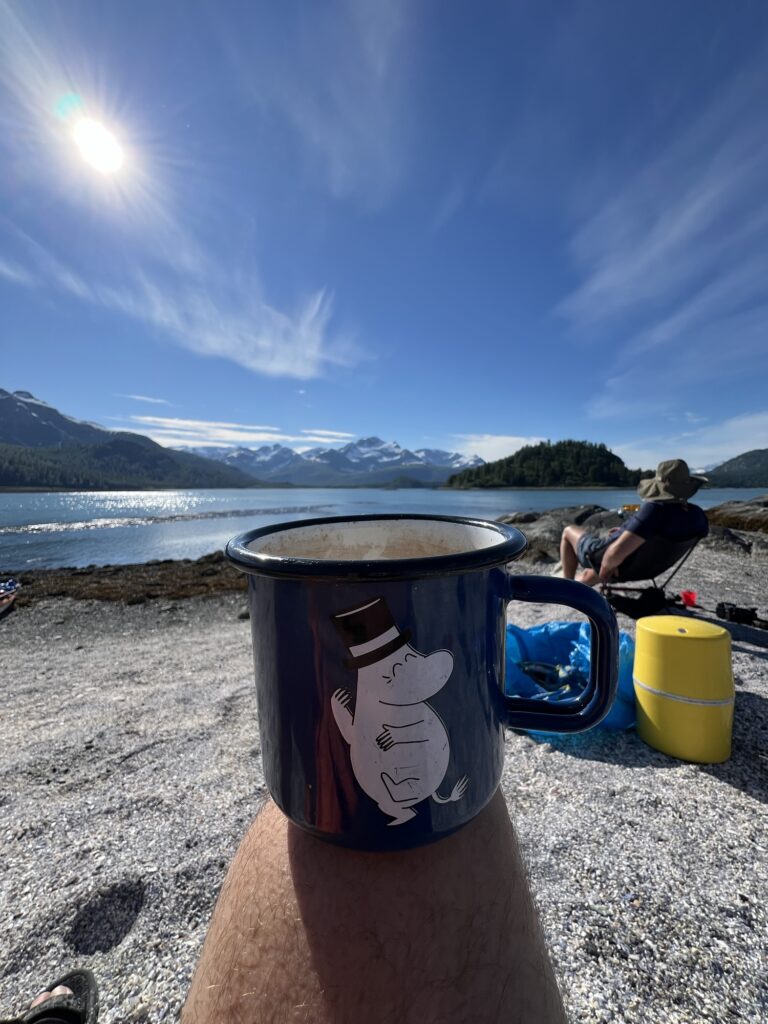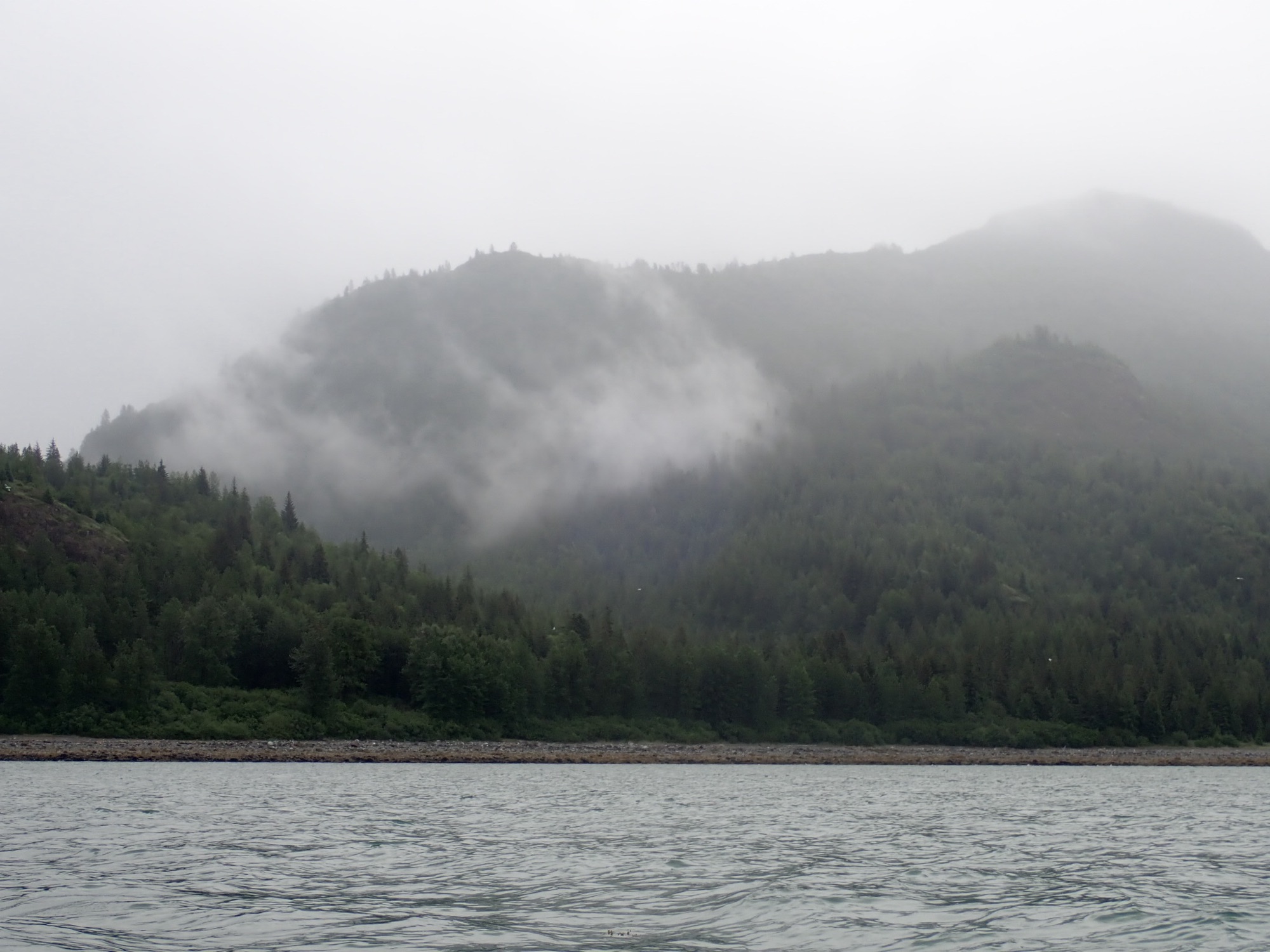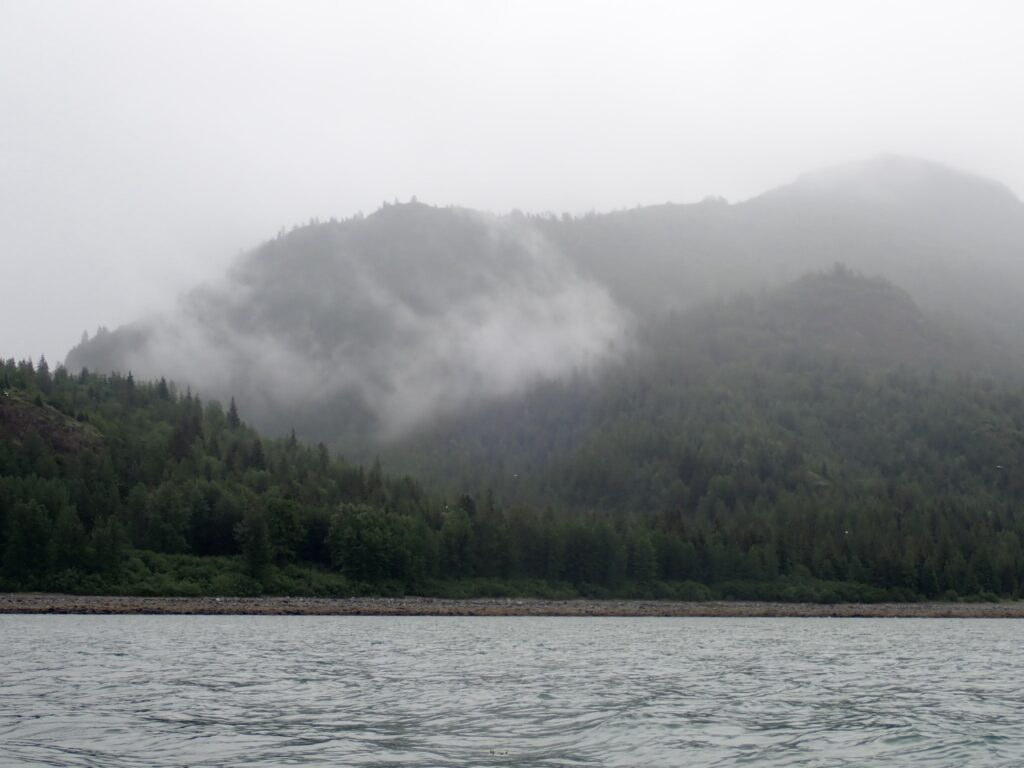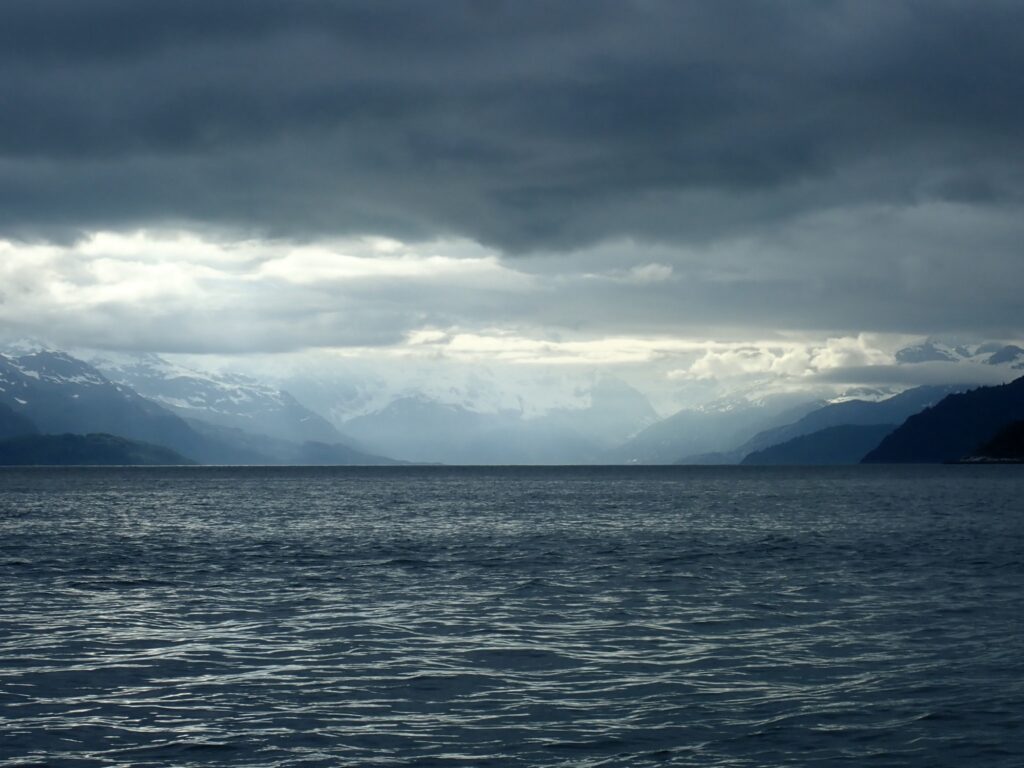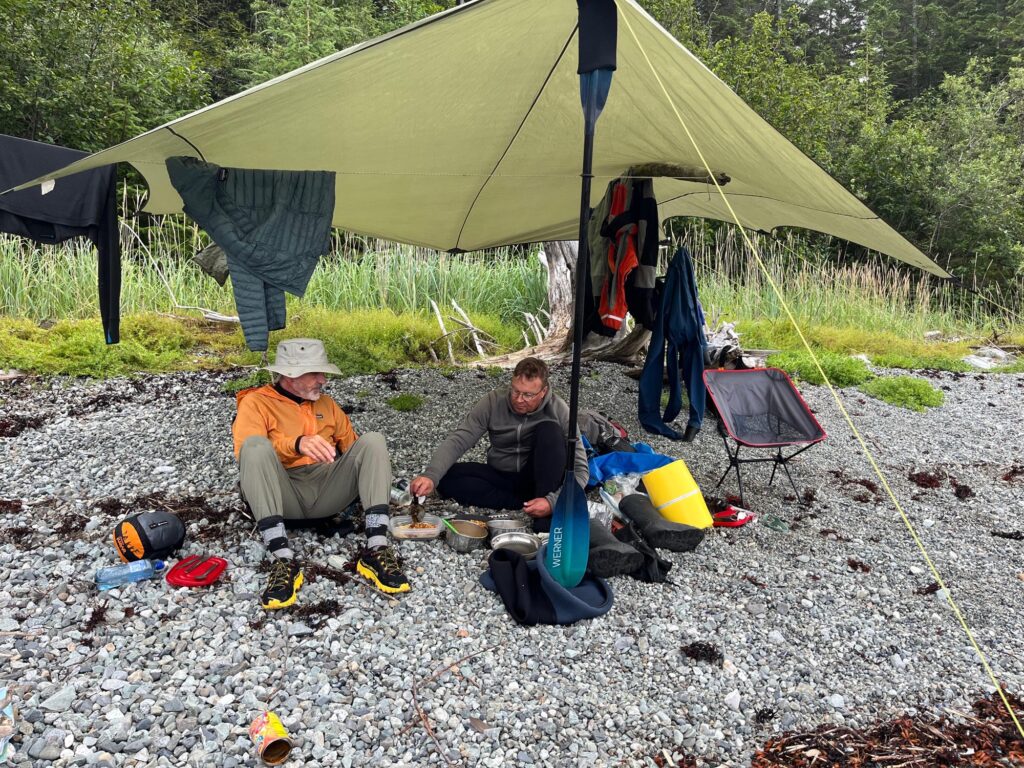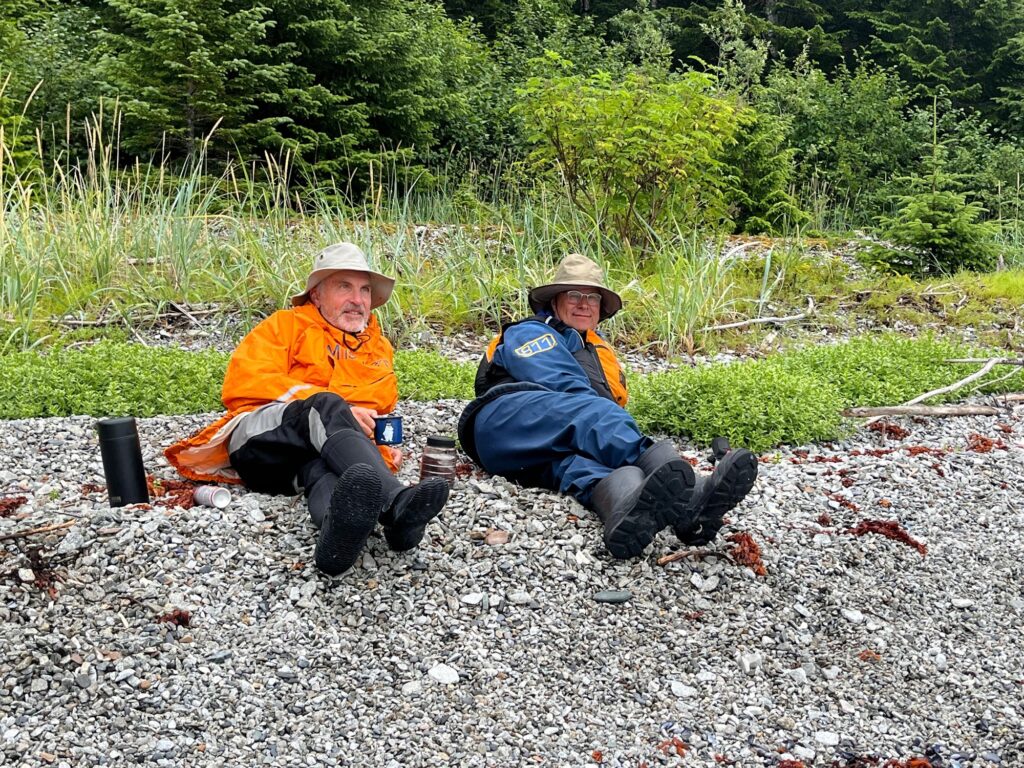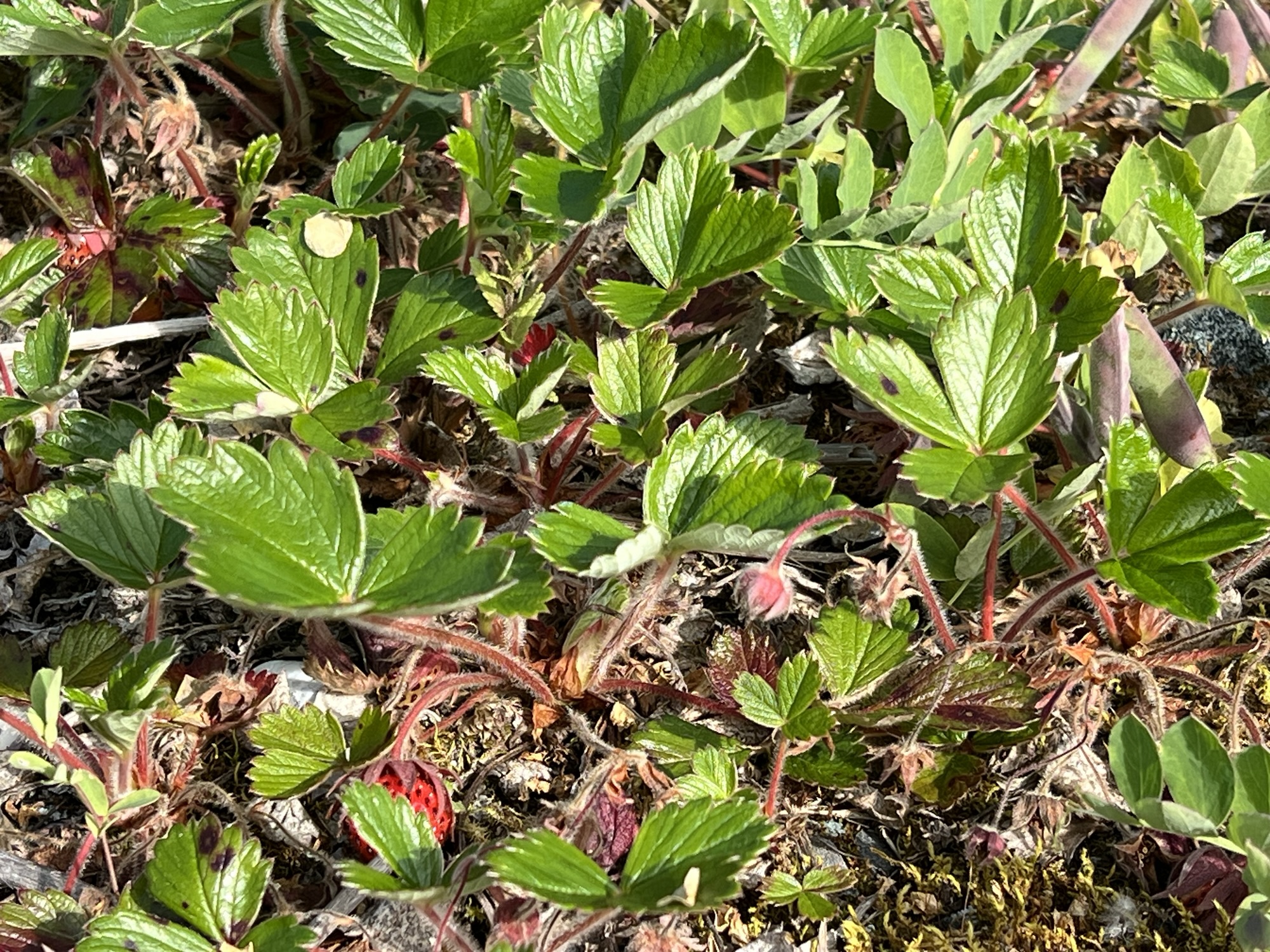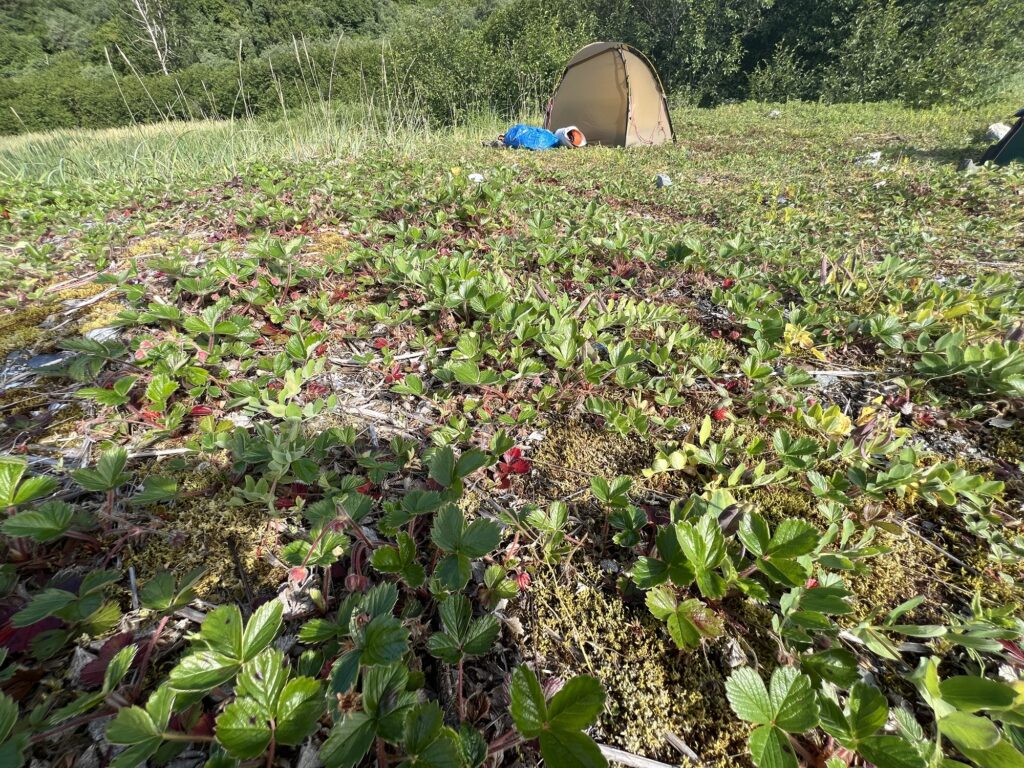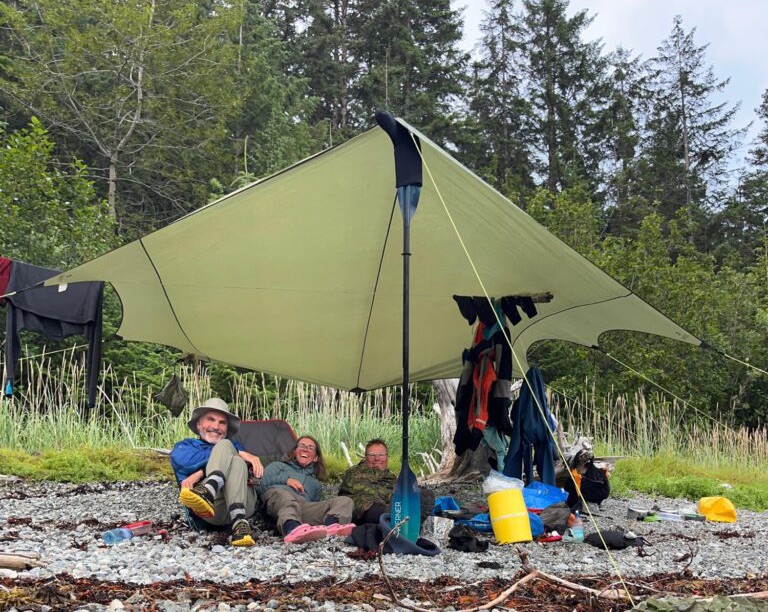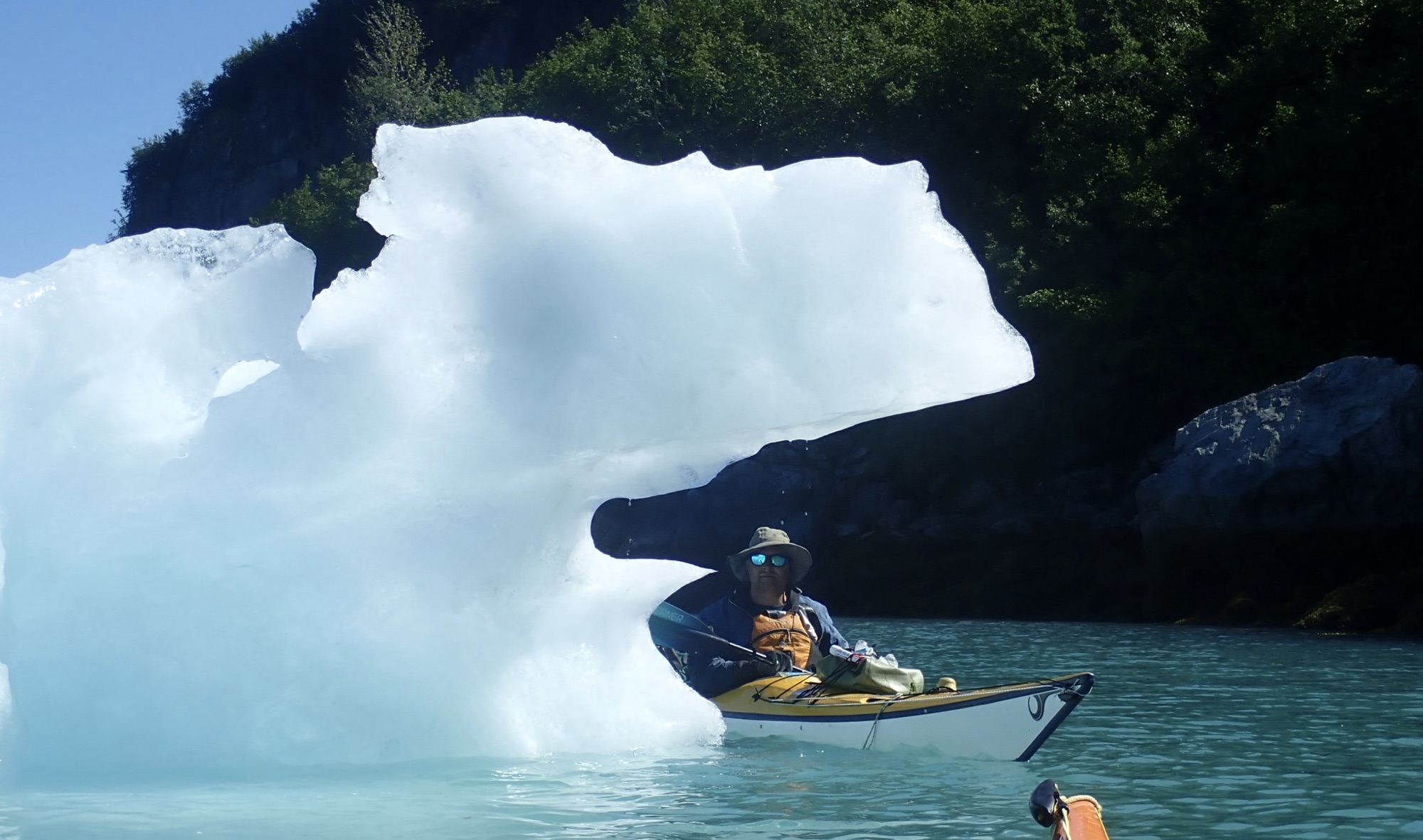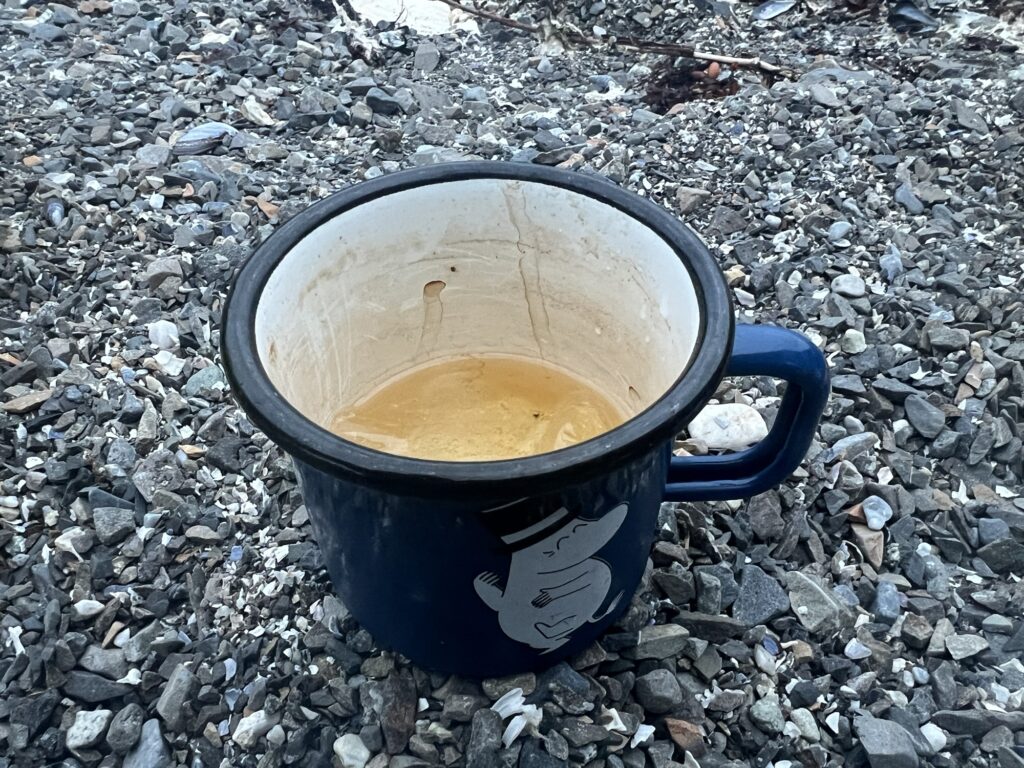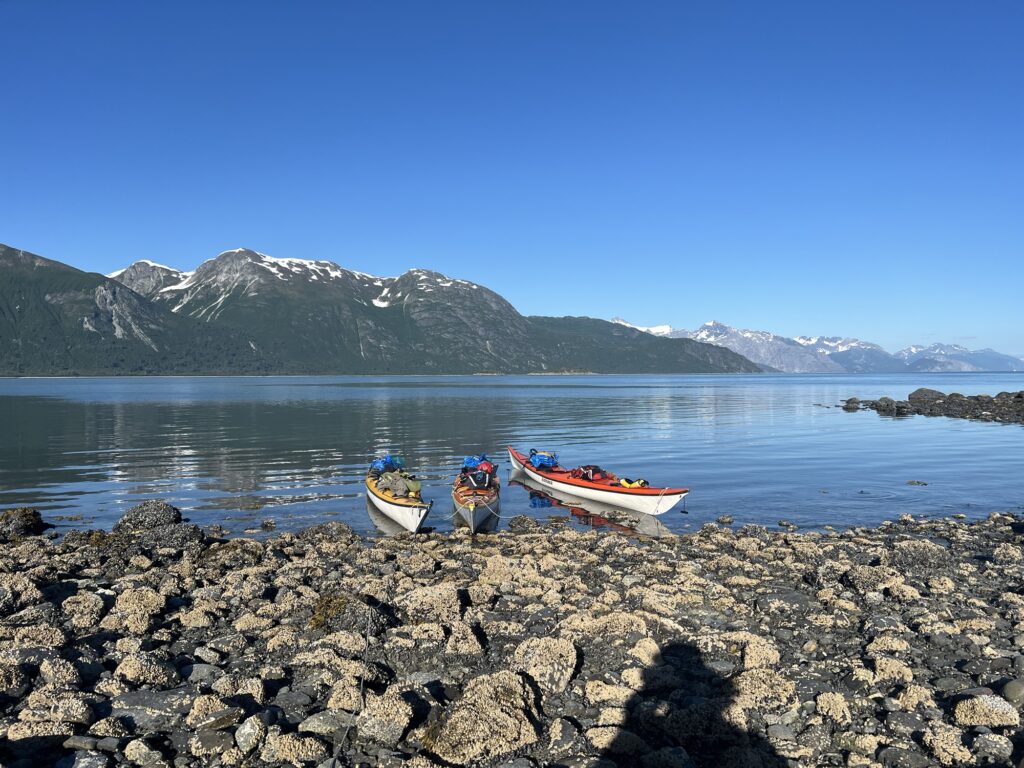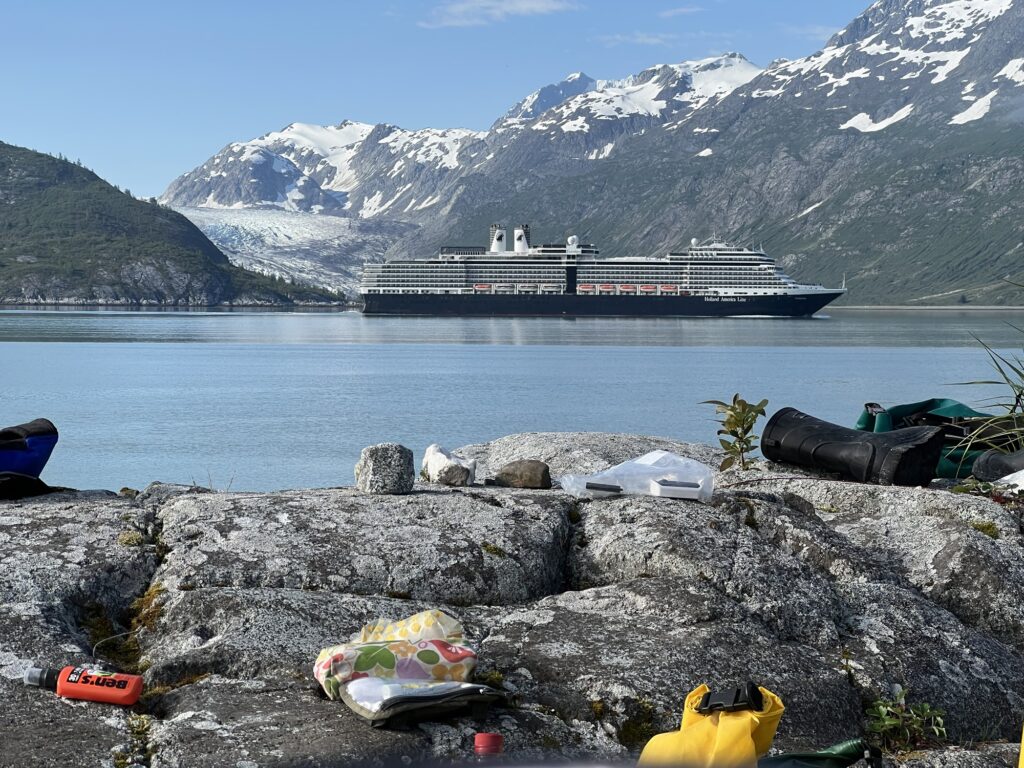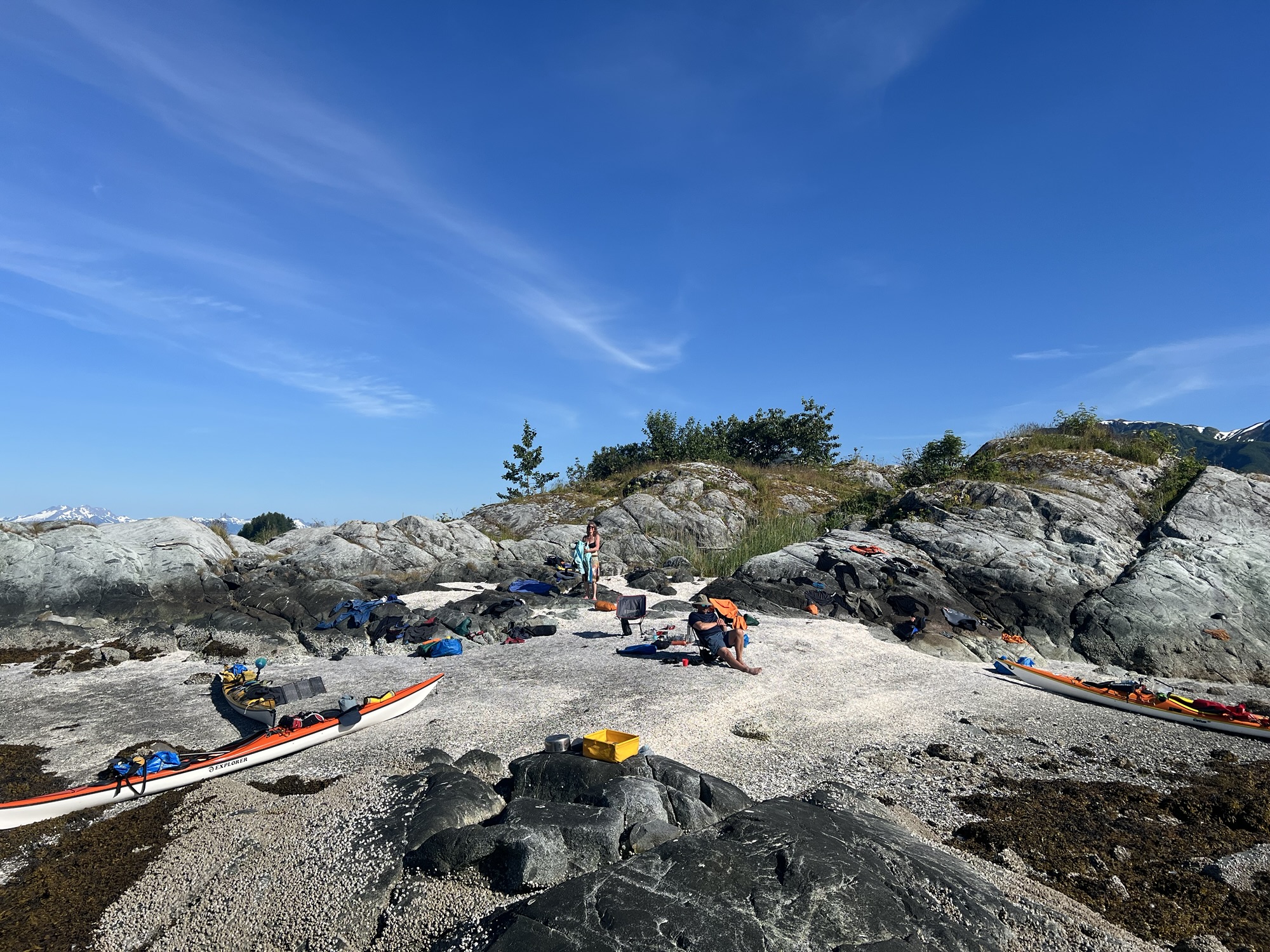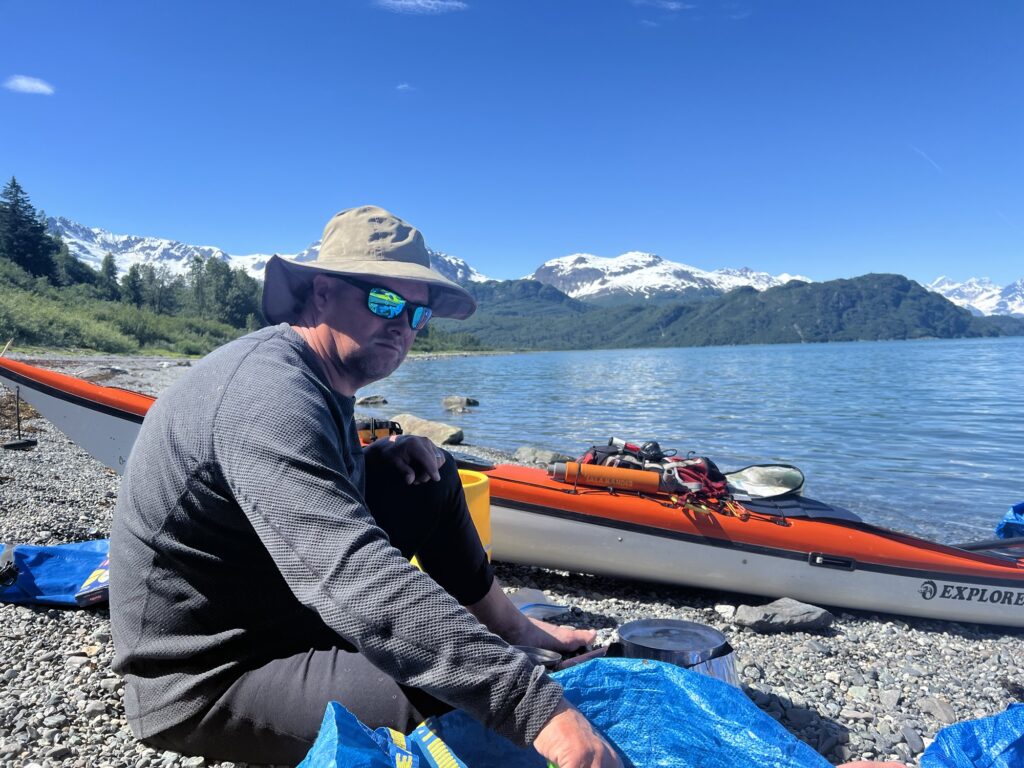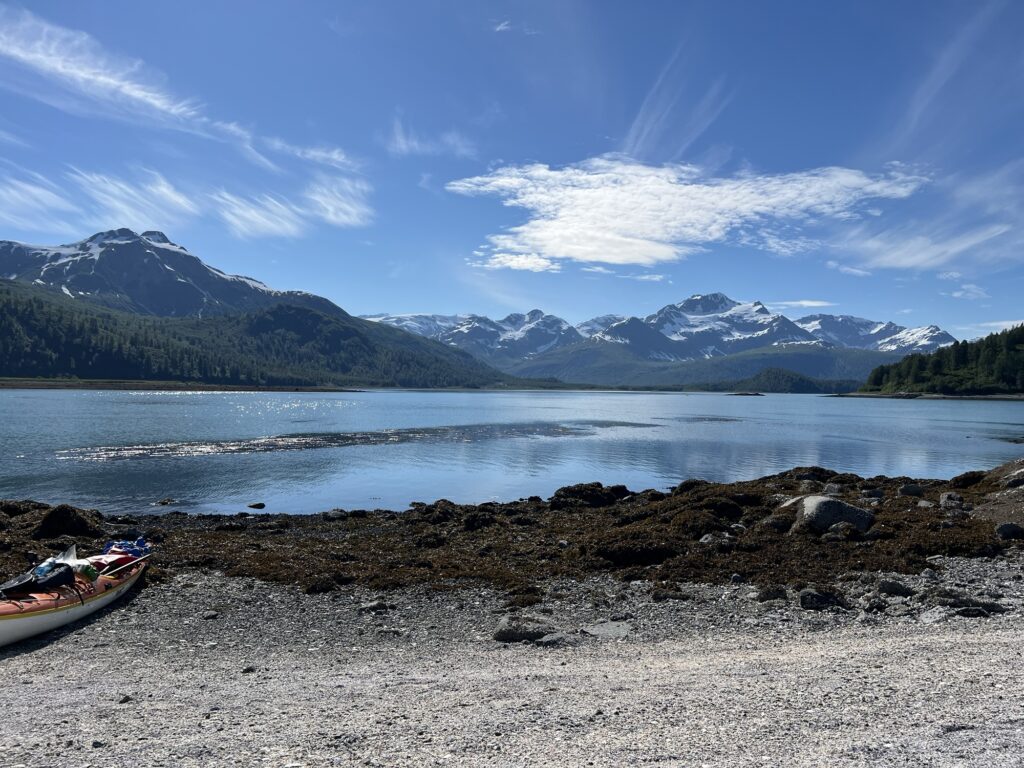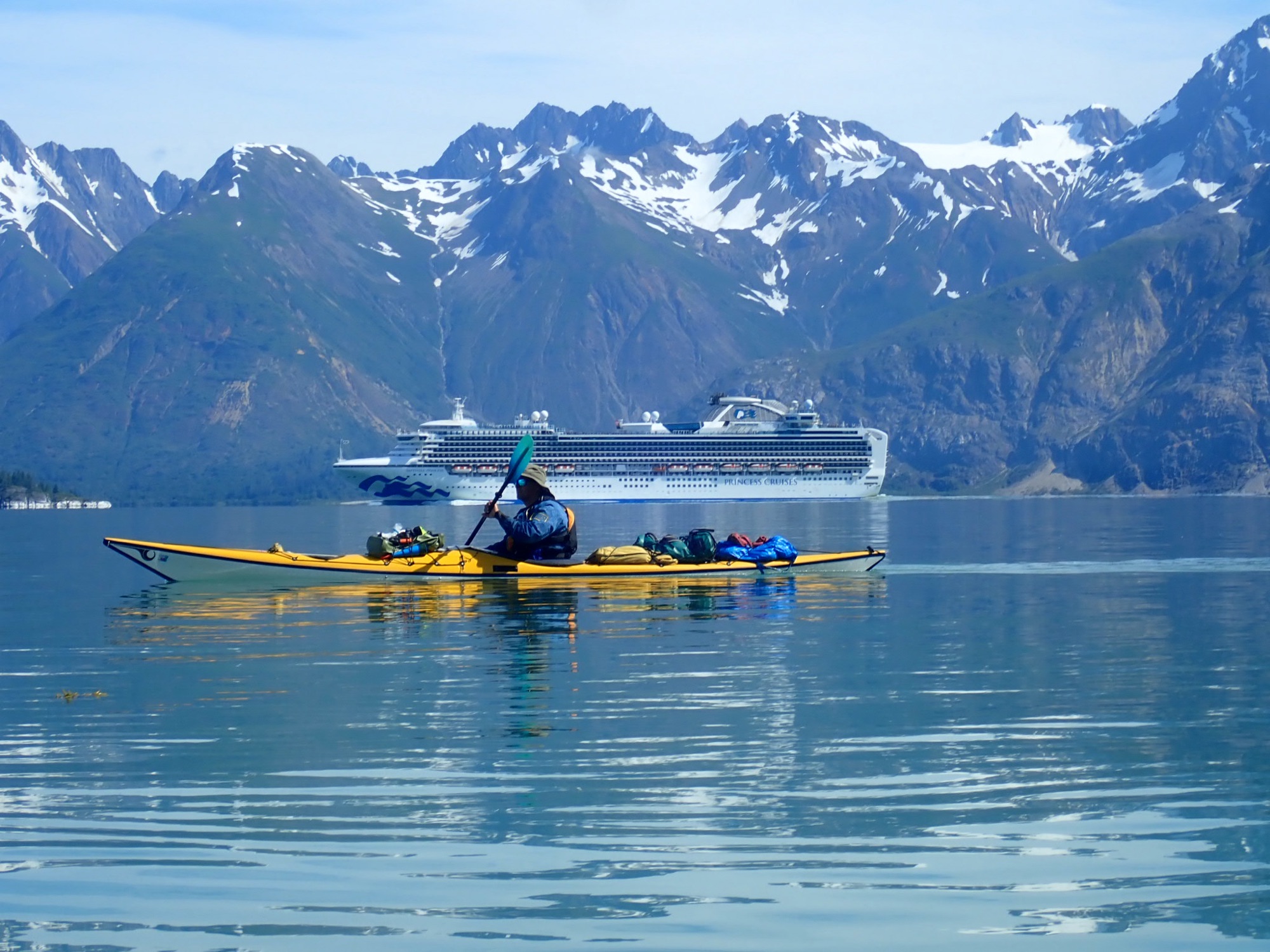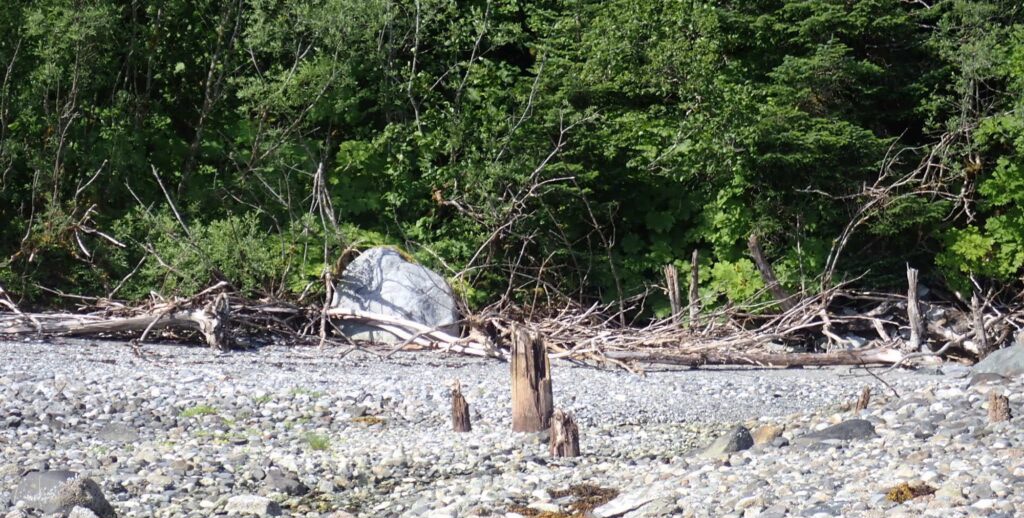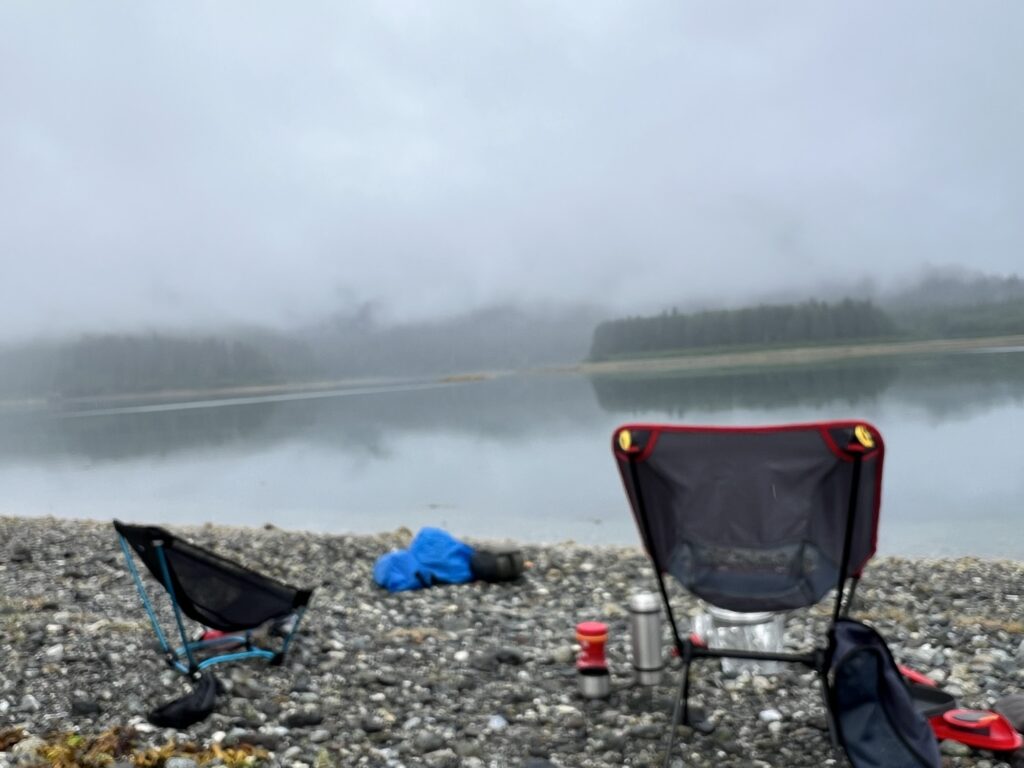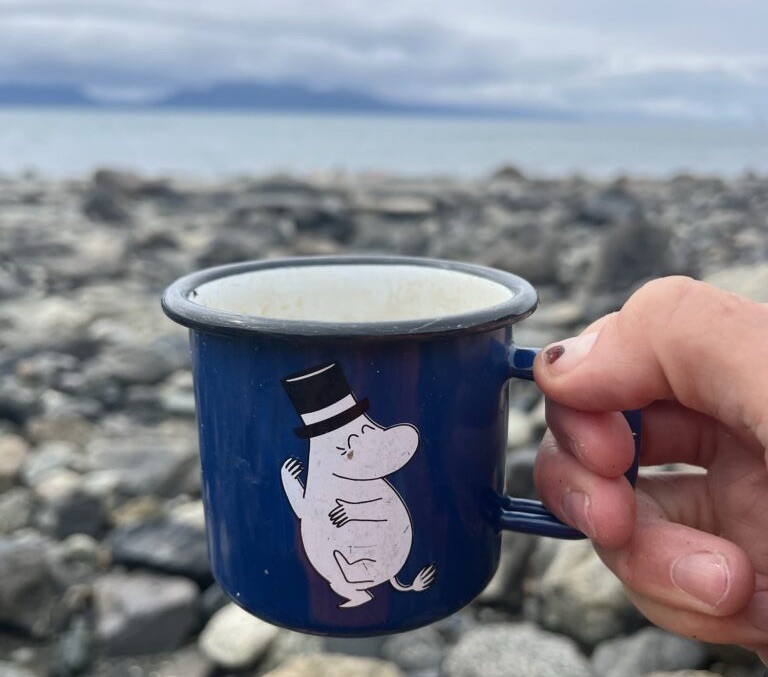We were waken by the sound of whales blowing. This time it turned out to be a small pod of orcas. A male, a female and a calf. The first orcas we have seen here. Soon an humpback with a calf also appeared, she appeared a bit agitated flapping with her tail and “singing”. Maybe it was because of the orcas? A few more humpbacks were blowing further away toward Admirality island so at least half a dozen whales was in line of sight for morning coffee.
Just as we had taken down camp Rick appeared. We asked about the dead, fleeced sea otters. Was it legal to hunt them? Yes, for natives was the answer. And because the sea otters population is booming, hunting is actually encouraged by the authorities.
Rick also explained about the whale watching industry. The largest in the world worked out of Juneau, 75 outfits serving the 1.6 million cruise passengers that visits Juneau per year (Juneau population is ca 32 000).
Their homestead had a wide view of the prime whale watching area between Shelter Island and Admirality island. They did not like what they saw. The whales were chased all across the strait. We had seen the frantic scurrying of ships from Admirality island yesterday afternoon, and wondered if some sort of urgent search was going on. So here was the explanation; it was whale chasing.
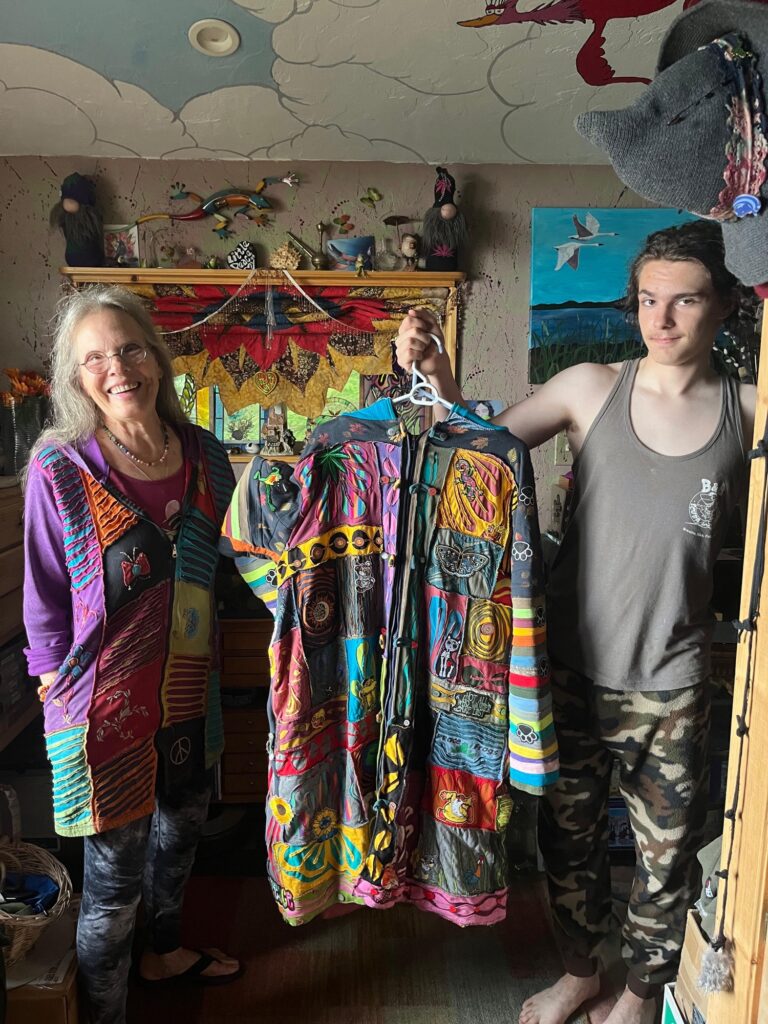
Next we were invited to a tour of the homestead, and explained about the water collection, greenhouses, ponds (with fish to eat mosquito larvae), escavator to build access to get out timber for firewood, two cabins for the WWOFers, solar power, wind power a back up generator, a wood fired hot tub, a 1930’s fully workable Ford A model truck…etc, and also a “flower power” (?) monument in the form of a VW beetle, and more

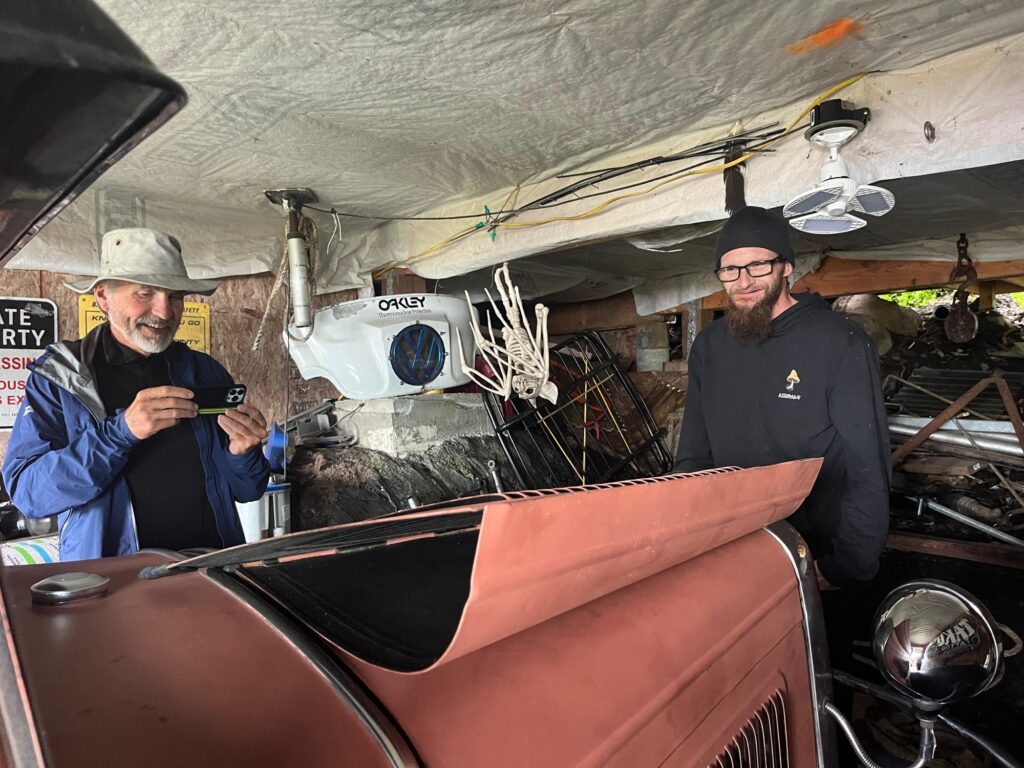
The “beetle monument” was Karen, Rick’s wife’s work. And it wasn’t her only artistic exploit. On grandson Tyler’s insistence we got to see the winter coat SHA had made as last winters “winter project”, all from recycled T-shirts. Quite impressive!
We need winter projects round here when we are alone on the island Karen explained.
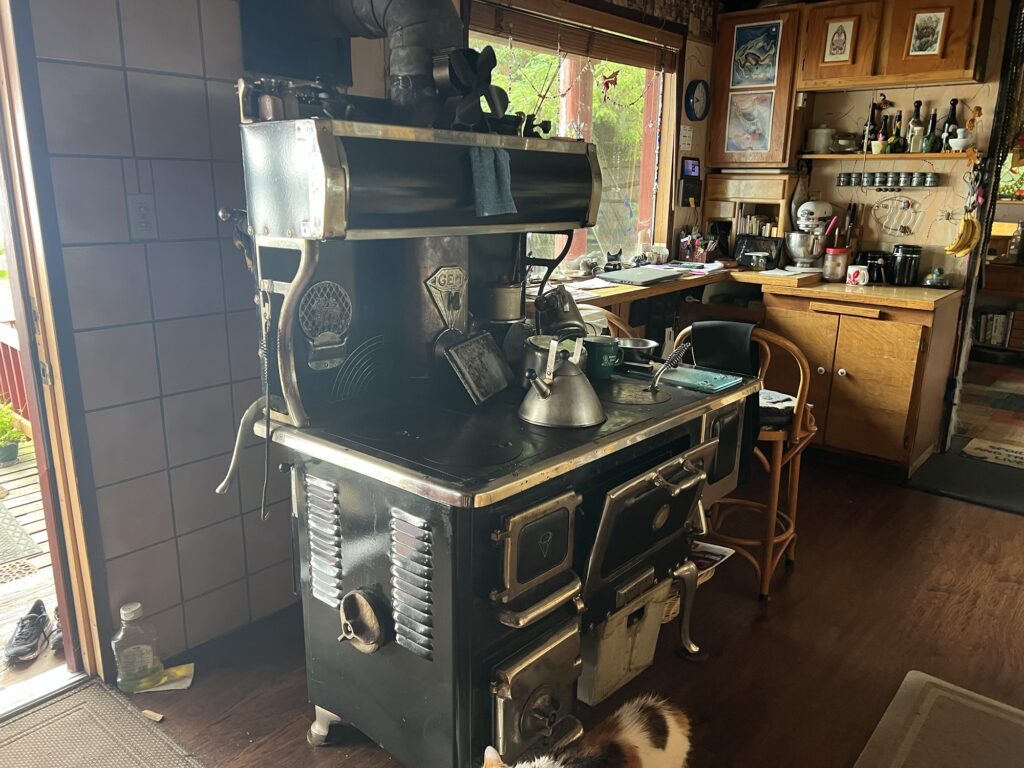
We also got a quick introduction to cooking on wood fired stoves. The Amish still builds them to 19th century specifications and quality.
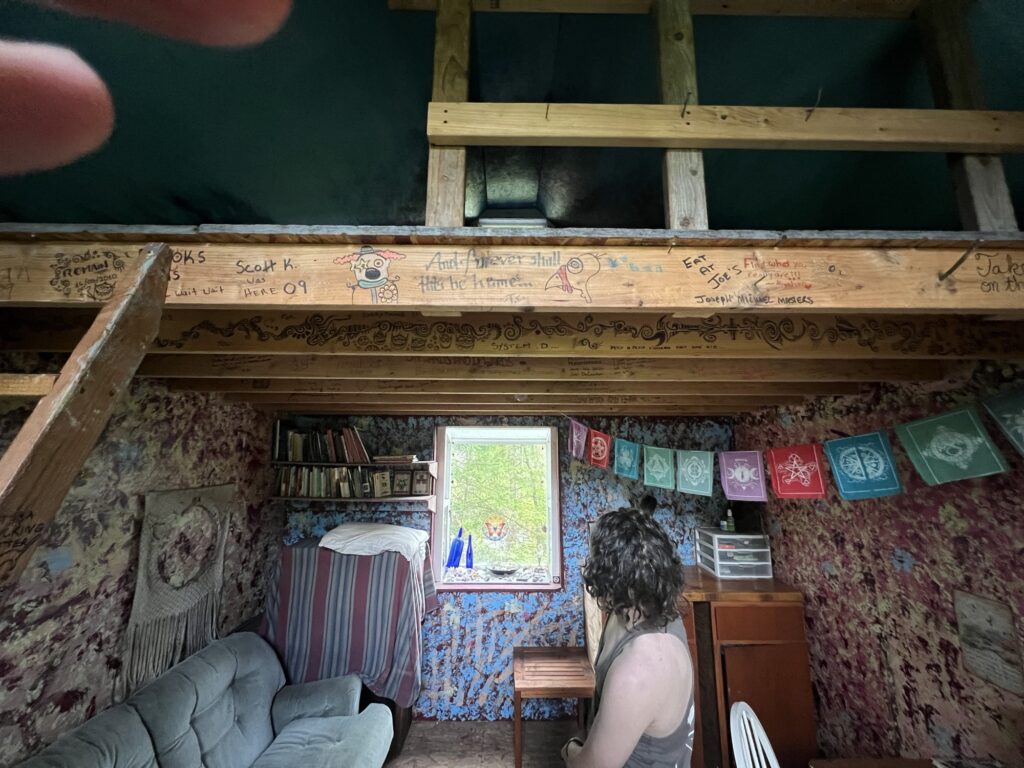
Time to bid farewell and paddle the last 15 km of our journey.
As the family and WWOFs helped us carry the kayaks we looked out on the bay where half a dozen whales had been feeding in the morning. Now we saw no whales, but rather a full dozen of whale watching boats scurrying around looking for the whales that had chased away.
Food for thought as we paddled the last km. The cruise/whale watching industry seemed to be close to destroying the whale presence and behaviour they were living off. And every year whales are killed by collisions with ships. Four so far this season we were told.
On the other hand a lot of Juneau live “down stream” from this industry. Weaning off will take some doing.
Maybe too much thinking and too little attention paid to landing spot. We managed to pass the suggested kayak delivery point by several km and ended up in the marina of Auke Bay.
Fortunately, Mike who will take the kayaks on behalf of Joe saw us paddle by and came over to help with a van.
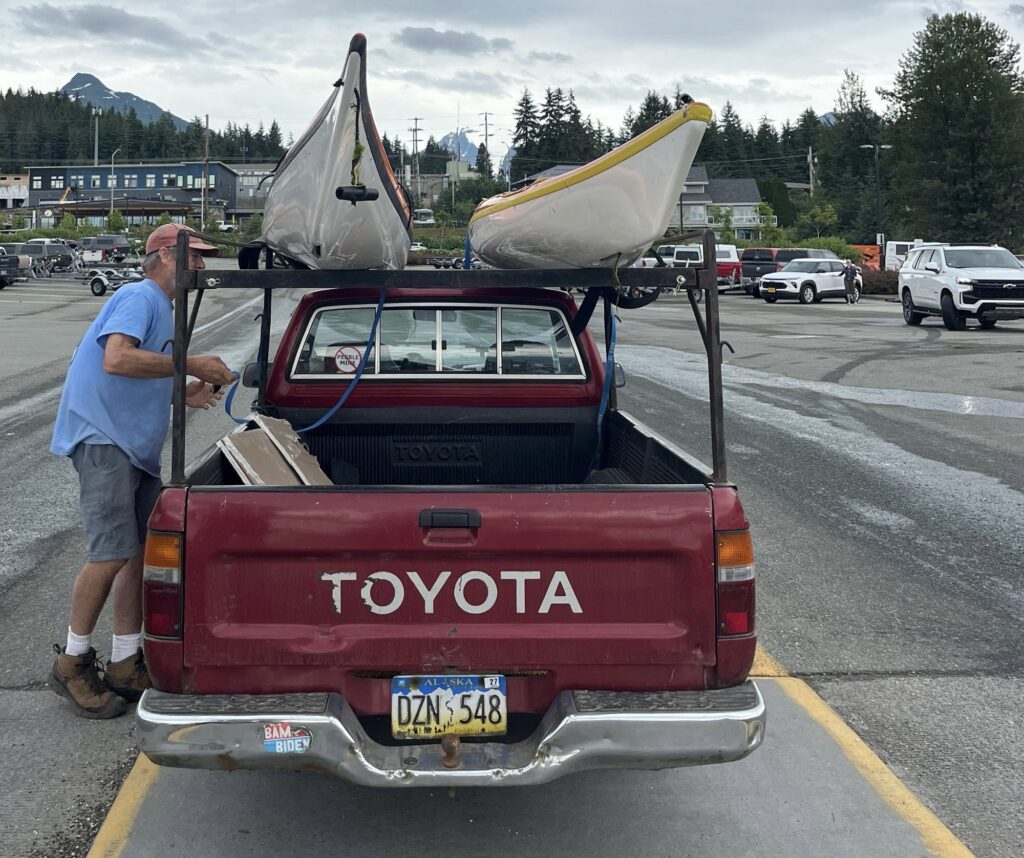
When he saw how much luggage we took out of the boats, he offered to loan us his other truck! Soon a quite proud Karianne came back back with a truck that just dwarfed her!

We found accommodation above a laundromat! Top location for our purpose. What remains now is rest, wash and repair. And travel home on Saturday. No more blogs.

